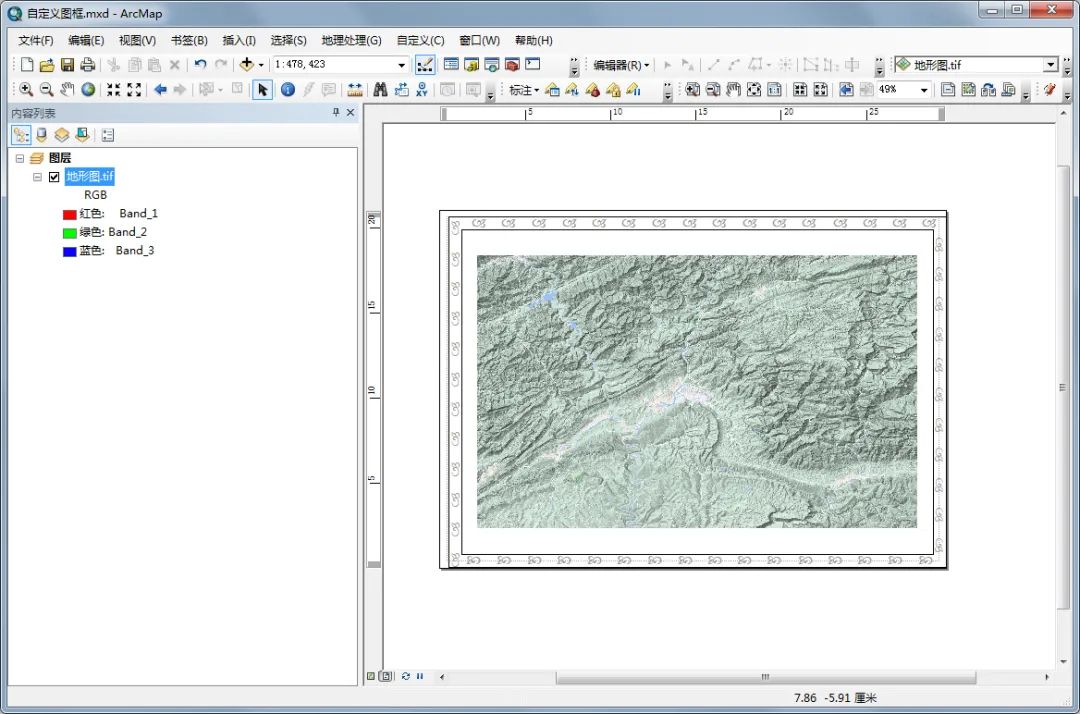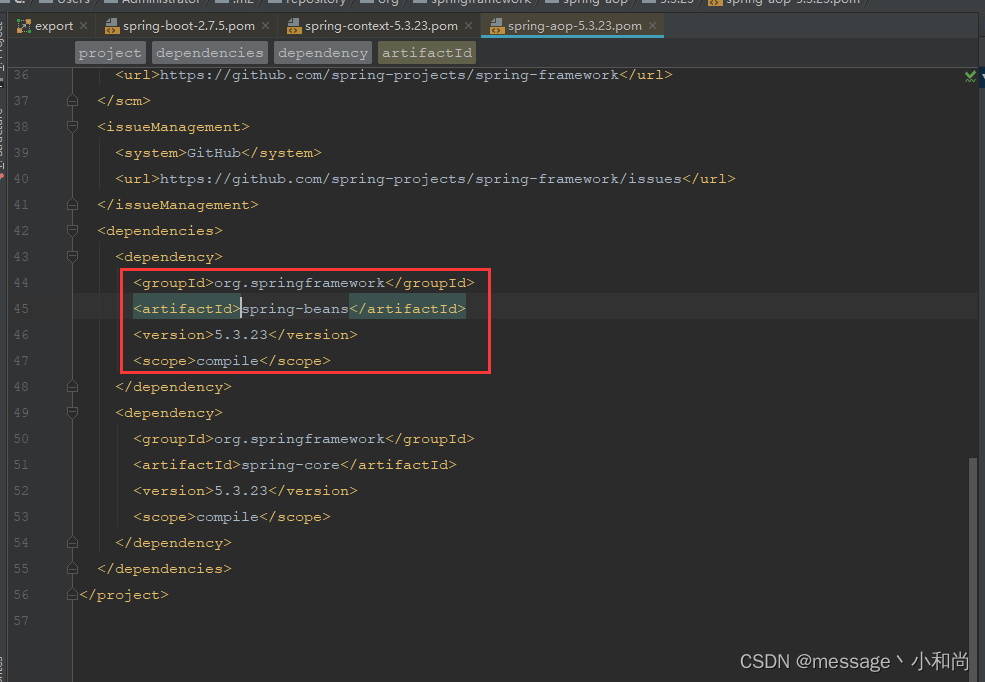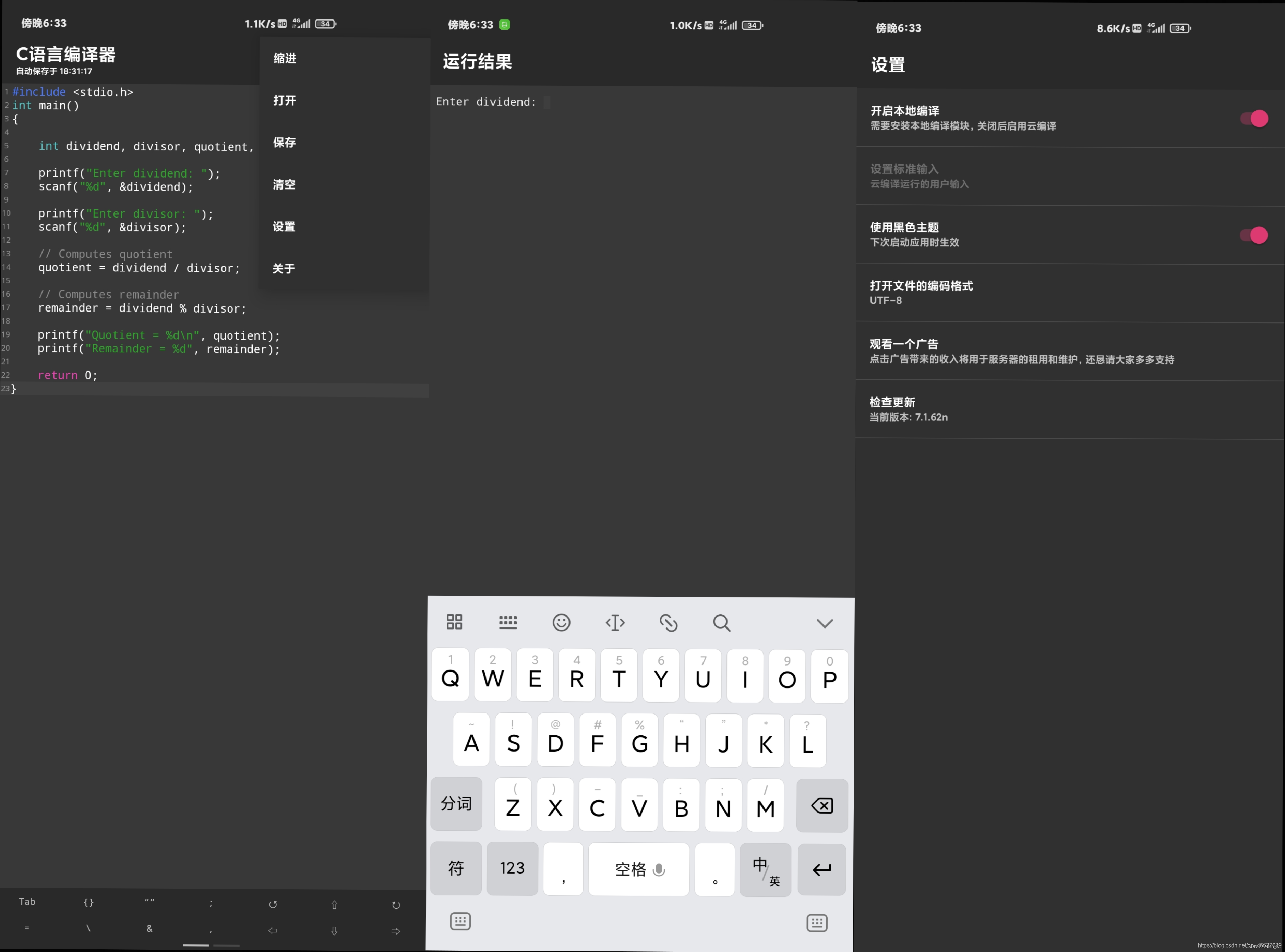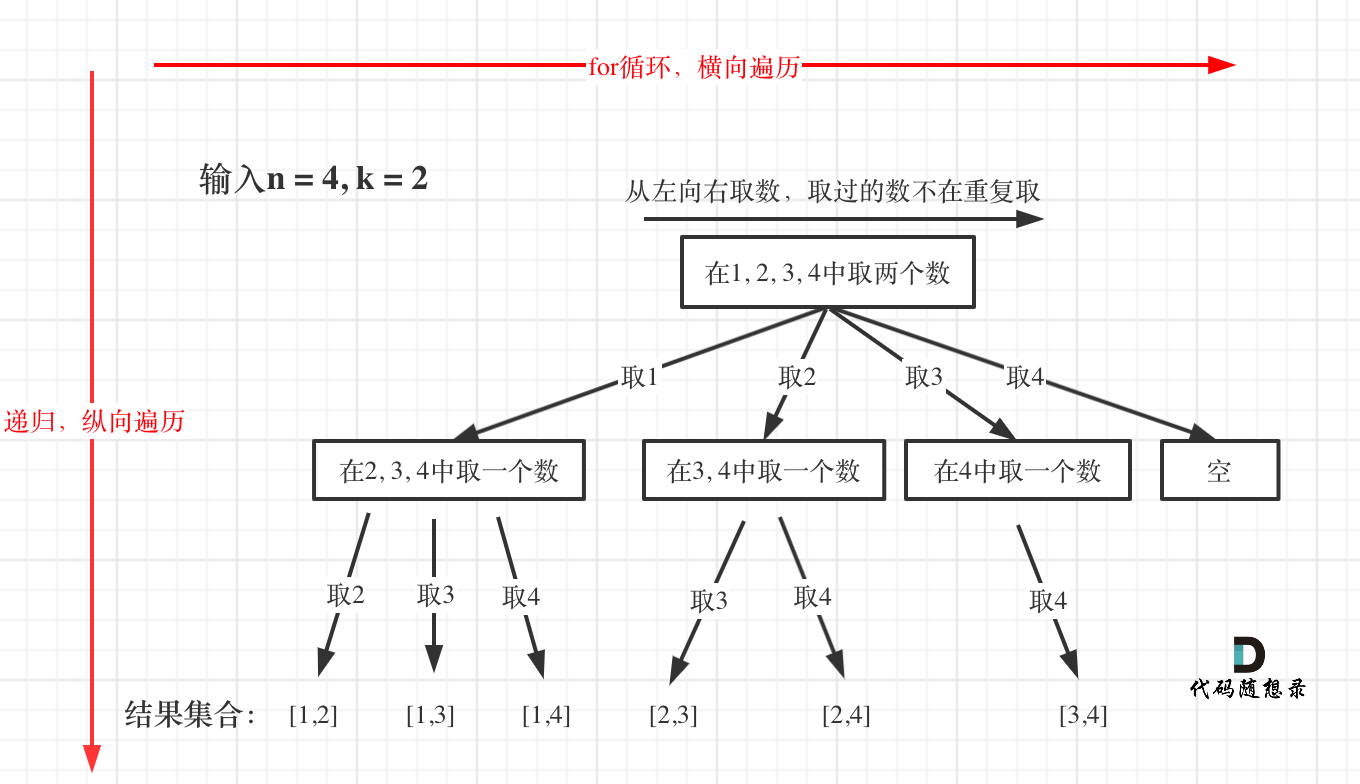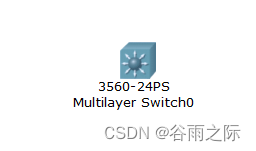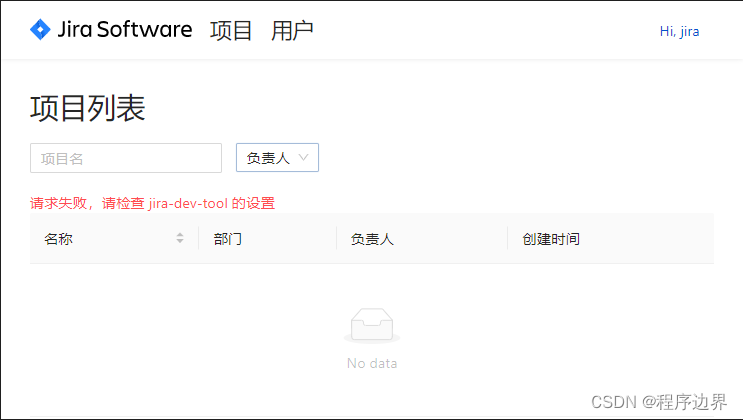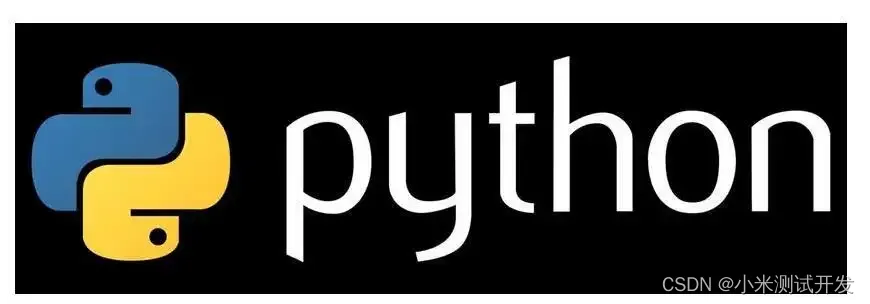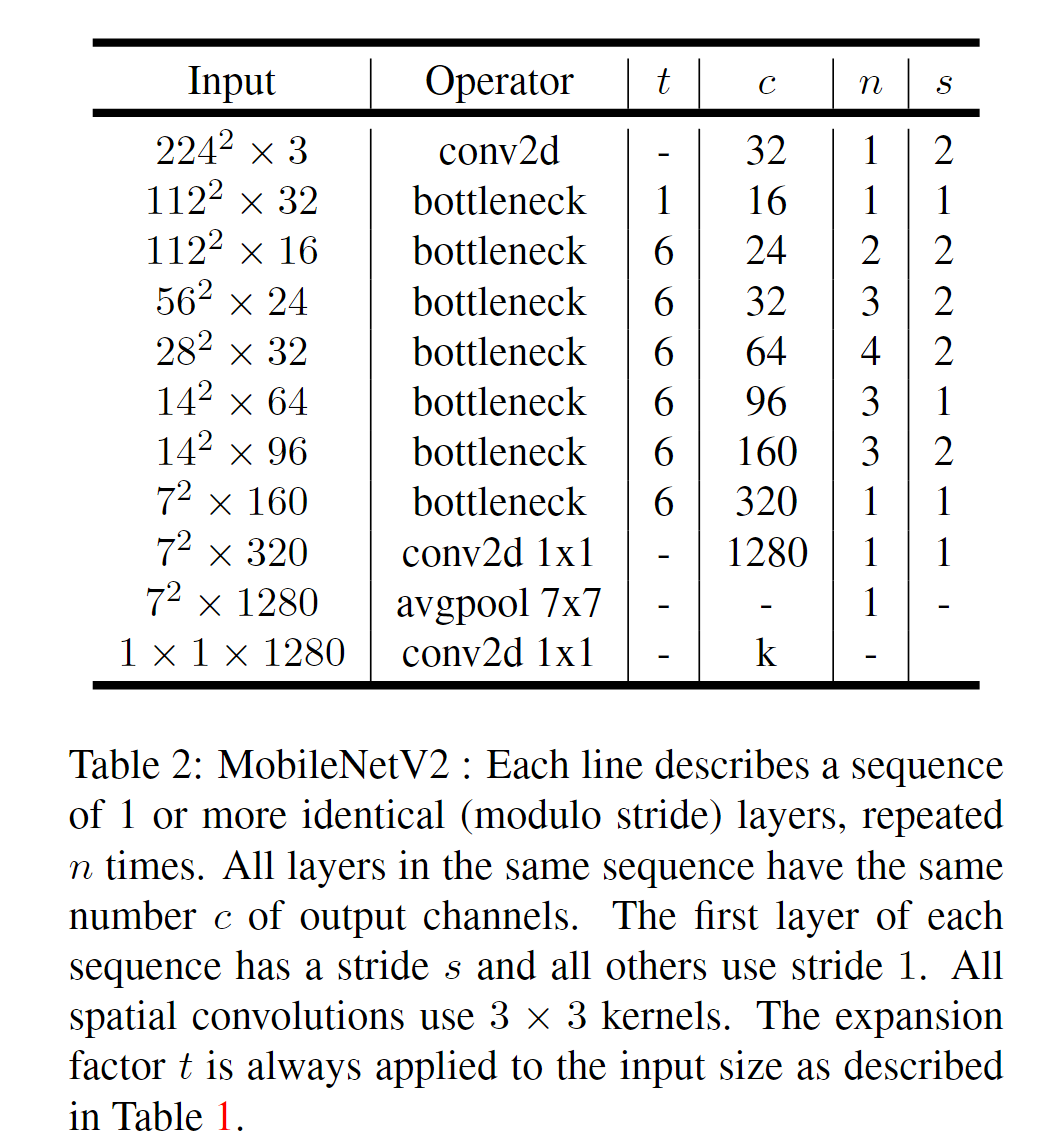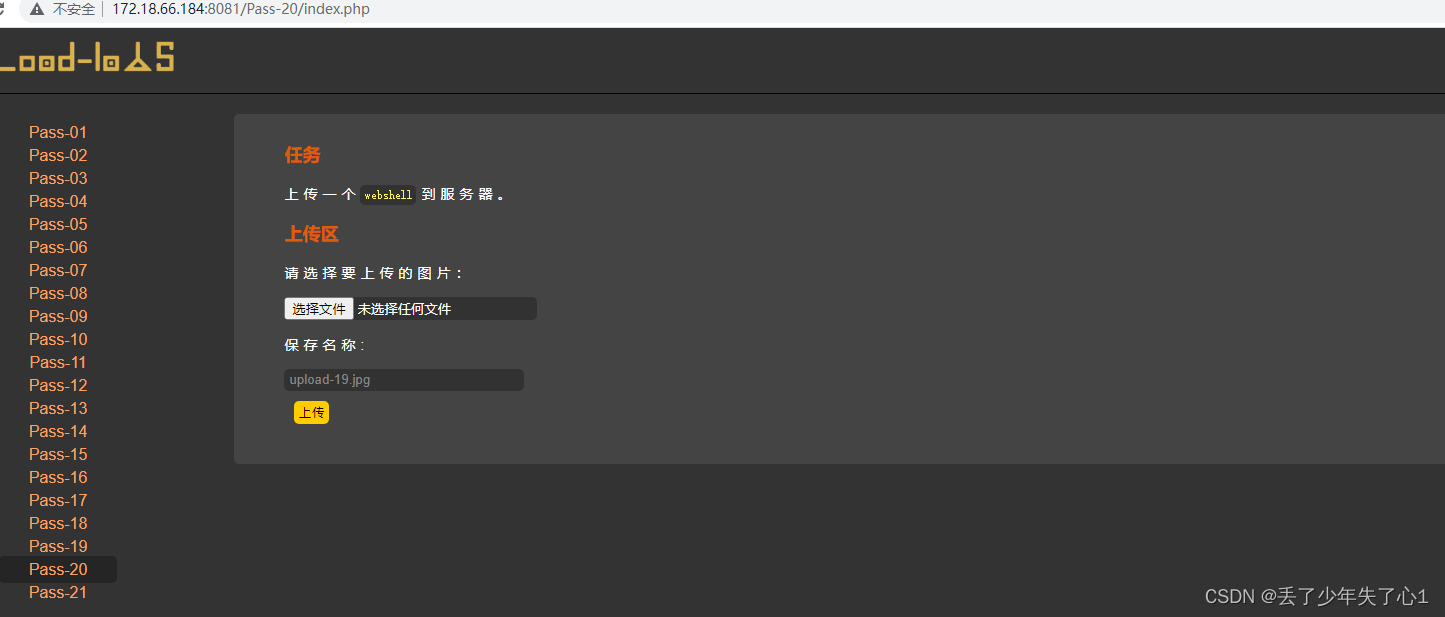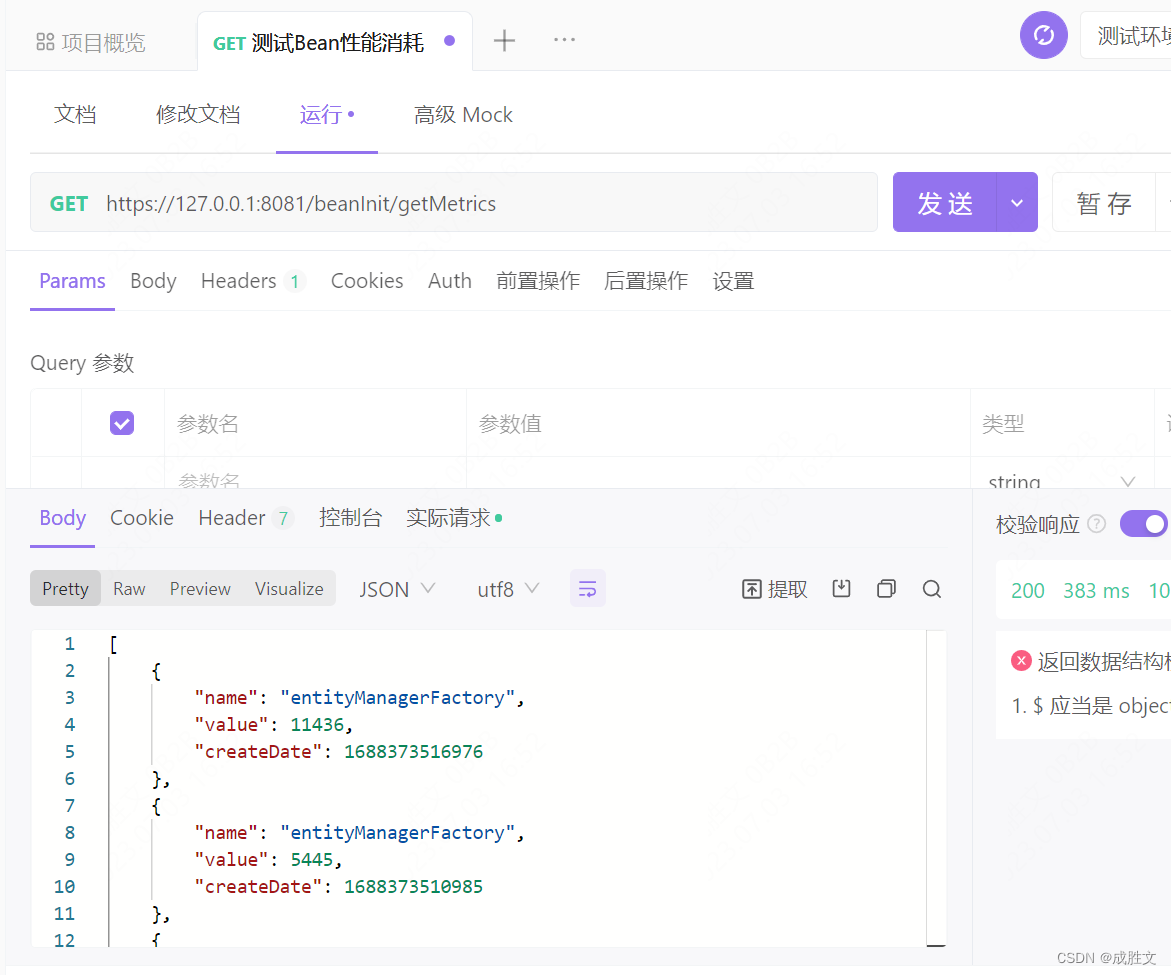基于pytorch实现YOLOv1(长长文)
前言
本篇文章的目的是记录自己实现yolo v1的过程,在此过程中,参考了许多开源的代码和博客,赞美大佬们。
参考文献和代码
YOLO v1代码参考:(读书人的事情,怎么能说抄了,是借鉴借鉴<_<)
1. https://blog.csdn.net/ing100/article/details/125155065
2. https://www.cnblogs.com/xiongzihua/p/9315183.html
3. https://blog.csdn.net/weixin_42295969/article/details/126454495
其它参考的方法博客:
1. torch.nonzero用法:https://blog.csdn.net/flyingluohaipeng/article/details/125102049
2. torch.clamp用法https://blog.csdn.net/m0_47256162/article/details/127856288
3. numel函数用法:https://www.jb51.net/article/212178.htm
4. squeeze与unsqueeze用法:https://blog.csdn.net/weixin_43820352/article/details/125995034
5. torch.sort用法:https://blog.csdn.net/devil_son1234/article/details/128340490
6. requires_grad理解:https://blog.csdn.net/weixin_42572656/article/details/116117780
目录结构
文章目录
- 基于pytorch实现YOLOv1(长长文)
- 0. 本代码使用方法
- 1. 前期准备
- 1.1 目录结构
- 1.2 数据集介绍
- 1.3 YOLOv1介绍
- 1.4 说明
- 2. backbone实现
- 2.1 ResNet架构介绍
- 2.2 导入需要的包
- 2.3 构建ResNet
- 2.4 完整代码
- 3. 数据集处理
- 4. 数据加载器
- 4.1 导包
- 4.2 构建数据加载器
- 4.3 调试代码
- 4.4 完整代码
- 5. 损失函数
- 5.1 导包
- 5.2 构建损失函数
- 5.3 完整代码
- 6. 训练
- 6.1 导包
- 6.2 实现训练代码
- 6.3 训练过程展示
- 6.4 完整代码
- 7. 测试
- 7.1 导包
- 7.2 实现预测代码
- 7.3 预测结果展示
- 7.4 完整代码
- 8. 代码与权重下载地址
- 9. 总结
0. 本代码使用方法
这一部分是我在完成了所有的代码以及模型的训练和预测后补充的,主要是方便大家下载完代码和权重文件后,知道怎么使用。
首先,通过文章末尾的下载地址,把代码、权重文件下载下来,然后通过1.2节中的博客中的链接把数据下载下来。下载完后的结果如下图:

注意,下载来的数据你可以自由选择存放位置,但是需要修改代码中有关数据路径的参数。
下载完后,里面的各个文件夹的含义如下:
| 文件夹名 | 含义 |
|---|---|
| network | CNN Backbone存放位置 |
| save_weights | 权重存放的位置 |
| test_images | 几张测试用的图片 |
| utils | 辅助功能的代码存放位置 |
其中,关于权重文件,我需要说明的是:我自己单机单卡,batch_size=2,epoch=50,在默认参数的情况下,训练了一整天才训练完,但是感觉选的优化器、学习率参数没有设置好,所以训练得效果并不是特别理想,你看7.3节中的测试结果录屏,可以发现有些对象没有检测到,有些对象检测错误等。
好的,当准备好所有东西后,打开predict.py这个文件,翻到下面最后几行,做出如下的修改:

选择好数据集后,可以直接运行predict.py这个文件,就可以看到如下的预测结果:

最后,想要训练yolov1,主要注意的一点是:你必须先运行utils文件夹下面的generate_txt_file.py这个文件,生成训练和验证所需的txt文件才可以去运行train.py这个训练文件。
1. 前期准备
准备好目录结构、数据集和关于YOLOv1的基础认知
1.1 目录结构
我的目录结构如下图所示:

其中,需要说明的是我的数据集文件夹在上一层目录中,但是大家用的时候可以把它放于本层目录中,然后再在代码中修改路径即可。
1.2 数据集介绍
本次采用的数据集还是VOC数据集,关于VOC数据集的介绍,可以看我这篇的博客:点击即可传送。
1.3 YOLOv1介绍
关于YOLOv1的论文解读网站上有非常多,这里大家可以看我的,但是更建议看大佬们的:
【论文解读】Yolo三部曲解读——Yolov1 :https://zhuanlan.zhihu.com/p/70387154
YOLO论文解读:https://blog.csdn.net/u014381600/article/details/55505231
目标检测模型YOLO-V1损失函数详解:https://blog.csdn.net/x454045816/article/details/107527326
1.4 说明
- 对于重要的代码部分,我会专门一步步讲解,但是不重要的部分,大家看我写的注释即可。
- 想要快速使用本代码,跳转到文章最后即可(包括代码、权重文件的下载路径)
2. backbone实现
在YOLOv1论文中,作者自己构建了一个架构,但是该架构还需要在ImageNet分类数据集上预训练,比较麻烦。因此大部分人都选用的ResNet作为自己的backbone,因为可以方便调用官方的预训练权重,这里我也是采用的ResNet。
这个文件名为My_ResNet.py位于network文件夹内。
2.1 ResNet架构介绍
对于ResNet不清楚的可以看我的博客。
首先,需要放一张ResNet的架构图:


那么,我们就根据上表格和图片来实现ResNet。
2.2 导入需要的包
# 1. 导入所需要的包
import torch
import math
from torch import nn
import torch.utils.model_zoo as model_zoo # 根据url加载模型
import torch.nn.functional as F
2.3 构建ResNet
第一步,构建基础block
这个基础block即类似下图的架构:

不过需要注意的是,ResNet18—ResNet152共有两种类型的Block块,如下图,一种不涉及1*1卷积网络,另外一种涉及:

因此,在实现的时候,也有两个Block,实现的代码如下:
# 2. 构建block: 不含有1*1
class Base_Block(nn.Module):
# 用于扩充的变量,表示扩大几倍
expansion = 1
def __init__(self,in_planes,out_planes,stride=1,downsample=None):
'''
:param in_planes: 输入的通道数
:param planes: 输出的通道数
:param stride: 默认步长
:param downsample: 是否进行下采样
'''
super(Base_Block, self).__init__()
# 定义网络结构 + 初始化参数
self.conv1 = nn.Conv2d(in_planes,out_planes,kernel_size=3,stride=stride,padding=1,bias=False)
self.bn1 = nn.BatchNorm2d(out_planes)
self.relu = nn.ReLU(inplace=True) # inplace为True表示直接改变原始参数值
self.conv2 = nn.Conv2d(out_planes,out_planes,kernel_size=3,stride=1,padding=1,bias=False)
self.bn2 = nn.BatchNorm2d(out_planes)
self.downsample = downsample
self.stride = stride
def forward(self,x):
# 前向传播
res = x # 残差
# 正常传播
out = self.conv1(x)
out = self.bn1(out)
out = self.relu(out)
out = self.conv2(out)
out = self.bn2(out)
# 判断是否下采样
if self.downsample is not None:
res = self.downsample(res)
# 相加
out += res
# 返回结果
out = self.relu(out)
return out
# 3. 构建Block:含有1*1
class Senior_Block(nn.Module):
expansion = 4
def __init__(self,in_planes,planes,stride=1,downsample=None):
'''
:param in_planes: 输入通道数
:param planes: 中间通道数,最终的输出通道数还需要乘以扩大系数,即expansion
:param stride: 步长
:param downsample: 下采样方法
'''
super(Senior_Block, self).__init__()
self.conv1 = nn.Conv2d(in_planes,planes,kernel_size=1,bias=False)
self.bn1 = nn.BatchNorm2d(planes)
self.conv2 = nn.Conv2d(planes,planes,kernel_size=3,stride=stride,padding=1,bias=False)
self.bn2 = nn.BatchNorm2d(planes)
self.conv3 = nn.Conv2d(planes, planes * 4, kernel_size=1, bias=False)
self.bn3 = nn.BatchNorm2d(planes*4)
self.relu = nn.ReLU(inplace=True)
self.downsample = downsample
self.stride = stride
def forward(self,x):
# 残差
res = x
# 前向传播
out = self.conv1(x)
out = self.bn1(out)
out = self.relu(out)
out = self.conv2(out)
out = self.bn2(out)
out = self.relu(out)
out = self.conv3(out)
out = self.bn3(out)
# 是否下采样
if self.downsample is not None:
res = self.downsample(x)
# 相加
out += res
out = self.relu(out)
return out
第二步,构建输出block
这一点需要特别注意,因为我们实现的是YOLOv1,其要求我们的最终输出为7*7*30的形式,而不是常规的分类输出,因此对于原始的ResNet,我们需要删除最后的全连接层,并且修改输出形式。关于这一点,我用我之前实现的ResNet分类代码进行了调试,发现在经历最后的全连接前,其输出形式为:

因此,这意味着我们仅仅需要修改ResNet最后的输出,那么我们按照ResNet Block的形式,为它专门添加一个output_block即可,思路如下图:

具体的代码实现如下:
# 4. 构建输出层
class Output_Block(nn.Module):
expansion = 1
def __init__(self, in_planes, planes, stride=1, block_type='A'):
'''
:param in_planes: 输入通道数
:param planes: 中间通道数
:param stride: 步长
:param block_type: block类型,为A表示不需要下采样,为B则需要
'''
super(Output_Block, self).__init__()
# 定义卷积
self.conv1 = nn.Conv2d(in_planes, planes, kernel_size=1, bias=False)
self.bn1 = nn.BatchNorm2d(planes)
self.conv2 = nn.Conv2d(planes, planes, kernel_size=3, stride=stride, padding=2, bias=False,dilation=2)
self.bn2 = nn.BatchNorm2d(planes)
self.conv3 = nn.Conv2d(planes, self.expansion*planes, kernel_size=1, bias=False)
self.bn3 = nn.BatchNorm2d(self.expansion*planes)
# 判断是否需要下采样,相比于普通的判断方式,多了一个block类型
self.downsample = nn.Sequential()
if stride != 1 or in_planes != self.expansion*planes or block_type=='B':
self.downsample = nn.Sequential(
nn.Conv2d(in_planes, self.expansion*planes, kernel_size=1, stride=stride, bias=False),
nn.BatchNorm2d(self.expansion*planes)
)
def forward(self, x):
# 前向传播
out = F.relu(self.bn1(self.conv1(x)))
out = F.relu(self.bn2(self.conv2(out)))
out = self.bn3(self.conv3(out))
# 相加与下采样
out += self.downsample(x)
out = F.relu(out)
return out
第三步,构建ResNet
下面,我们实现ResNet这个类,这个类的整体构建思路就是最开始的表格那样,一步步搭建即可。
具体代码如下:
# 5. 构建ResNet
class ResNet(nn.Module):
def __init__(self, block, layers):
'''
:param block: 即基本的Block块对象
:param layers: 指的是创建的何种ResNet,以及其对应的各个层的个数,比如ResNet50,传入的就是[3, 4, 6, 3]
'''
super(ResNet, self).__init__()
# 最开始的通道数,为64
self.inplanes = 64
# 最开始大家都用到的卷积层和池化层
self.conv1 = nn.Conv2d(3, 64, kernel_size=7, stride=2, padding=3,bias=False)
self.bn1 = nn.BatchNorm2d(64)
self.relu = nn.ReLU(inplace=True)
self.maxpool = nn.MaxPool2d(kernel_size=3, stride=2, padding=1)
# 开始定义不同的block块
self.layer1 = self._make_layer(block, 64, layers[0])
self.layer2 = self._make_layer(block, 128, layers[1], stride=2)
self.layer3 = self._make_layer(block, 256, layers[2], stride=2)
self.layer4 = self._make_layer(block, 512, layers[3], stride=2)
# 不要忘记我们最后定义的output_block
self.layer5 = self._make_out_layer(in_channels=2048)
# 接上最后的卷积层即可,将输出变为30个通道数,shape为7*7*30
self.avgpool = nn.AvgPool2d(2) # kernel_size = 2 , stride = 2
self.conv_end = nn.Conv2d(256, 30, kernel_size=3, stride=1, padding=1, bias=False)
self.bn_end = nn.BatchNorm2d(30)
# 进行参数初始化
for m in self.modules():
if isinstance(m, nn.Conv2d):
n = m.kernel_size[0] * m.kernel_size[1] * m.out_channels
m.weight.data.normal_(0, math.sqrt(2. / n))
elif isinstance(m, nn.BatchNorm2d):
m.weight.data.fill_(1)
m.bias.data.zero_()
# 根据传入的layer个数和block创建
def _make_layer(self, block, planes, blocks, stride=1):
'''
:param block: Block对象
:param planes: 输入的通道数
:param blocks: 即需要搭建多少个一样的块
:param stride: 步长
'''
# 初始化下采样变量
downsample = None
# 判断是否需要进行下采样,即根据步长或者输入与输出通道数是否匹配
if stride != 1 or self.inplanes != planes * block.expansion:
downsample = nn.Sequential(
# 如果需要下采样,目的肯定是残差和输出可以加在一起
nn.Conv2d(self.inplanes, planes * block.expansion,kernel_size=1, stride=stride, bias=False),
nn.BatchNorm2d(planes * block.expansion),
)
# 开始创建
layers = []
# 第一个block需要特别处理:
# 比如第一个,传入的channel为512,但是最终的输出为256,那么是需要下采样的
# 但是对于第二个block块,传入的肯定是第一个的输出即256,而最终输出也为256,因此不需要下采样
layers.append(block(self.inplanes, planes, stride, downsample))
self.inplanes = planes * block.expansion
for i in range(1, blocks):
# 重复指定次数
layers.append(block(self.inplanes, planes))
return nn.Sequential(*layers) # *表示解码,即将列表解开为一个个对象
# 输出层的构建
def _make_out_layer(self, in_channels):
layers = []
# 根据需求,构建出类似与block的即可
layers.append(Output_Block(in_planes=in_channels, planes=256, block_type='B'))
layers.append(Output_Block(in_planes=256, planes=256, block_type='A'))
layers.append(Output_Block(in_planes=256, planes=256, block_type='A'))
return nn.Sequential(*layers)
def forward(self, x):
# 经历共有的卷积和池化层
x = self.conv1(x)
x = self.bn1(x)
x = self.relu(x)
x = self.maxpool(x)
# 经历各个block块
x = self.layer1(x)
x = self.layer2(x)
x = self.layer3(x)
x = self.layer4(x)
x = self.layer5(x)
# 经历最终的输出
x = self.avgpool(x)
x = self.conv_end(x)
x = self.bn_end(x)
x = F.sigmoid(x) # 归一化到0-1
# 将输出构建为正确的shape
x = x.permute(0, 2, 3, 1) # (-1,7,7,30)
return x
最后,根据前面定义的类,来构建不同的ResNet
这一块就很简单了,只需要定义不同的函数来创建不同的ResNet即可,代码如下:
# 6. 构建不同的ResNet函数
# 预训练下载链接
model_urls = {
'resnet18': 'https://download.pytorch.org/models/resnet18-5c106cde.pth',
'resnet34': 'https://download.pytorch.org/models/resnet34-333f7ec4.pth',
'resnet50': 'https://download.pytorch.org/models/resnet50-19c8e357.pth',
'resnet101': 'https://download.pytorch.org/models/resnet101-5d3b4d8f.pth',
'resnet152': 'https://download.pytorch.org/models/resnet152-b121ed2d.pth',
}
# 构建ResNet18
def resnet18(pretrained=False, **kwargs):
model = ResNet(Base_Block, [2, 2, 2, 2], **kwargs)
# 是否预训练
if pretrained:
model.load_state_dict(model_zoo.load_url(model_urls['resnet18']))
return model
# 构建ResNet34
def resnet34(pretrained=False, **kwargs):
model = ResNet(Base_Block, [3, 4, 6, 3], **kwargs)
if pretrained:
model.load_state_dict(model_zoo.load_url(model_urls['resnet34']))
return model
# 构建ResNet50
def resnet50(pretrained=False, **kwargs):
model = ResNet(Senior_Block, [3, 4, 6, 3], **kwargs)
if pretrained:
model.load_state_dict(model_zoo.load_url(model_urls['resnet50']))
return model
# 构建ResNet101
def resnet101(pretrained=False, **kwargs):
model = ResNet(Senior_Block, [3, 4, 23, 3], **kwargs)
if pretrained:
model.load_state_dict(model_zoo.load_url(model_urls['resnet101']))
return model
# 构建ResNet152
def resnet152(pretrained=False, **kwargs):
model = ResNet(Senior_Block, [3, 8, 36, 3], **kwargs)
if pretrained:
model.load_state_dict(model_zoo.load_url(model_urls['resnet152']))
return model
2.4 完整代码
完整代码如下:
# author: baiCai
# 1. 导入所需要的包
import torch
import math
from torch import nn
import torch.utils.model_zoo as model_zoo
import torch.functional as F
# 2. 构建block: 不含有1*1
class Base_Block(nn.Module):
# 用于扩充的变量,表示扩大几倍
expansion = 1
def __init__(self,in_planes,out_planes,stride=1,downsample=None):
'''
:param in_planes: 输入的通道数
:param planes: 输出的通道数
:param stride: 默认步长
:param downsample: 是否进行下采样
'''
super(Base_Block, self).__init__()
# 定义网络结构 + 初始化参数
self.conv1 = nn.Conv2d(in_planes,out_planes,kernel_size=3,stride=stride,padding=1,bias=False)
self.bn1 = nn.BatchNorm2d(out_planes)
self.relu = nn.ReLU(inplace=True) # inplace为True表示直接改变原始参数值
self.conv2 = nn.Conv2d(out_planes,out_planes,kernel_size=3,stride=1,padding=1,bias=False)
self.bn2 = nn.BatchNorm2d(out_planes)
self.downsample = downsample
self.stride = stride
def forward(self,x):
# 前向传播
res = x # 残差
# 正常传播
out = self.conv1(x)
out = self.bn1(out)
out = self.relu(out)
out = self.conv2(out)
out = self.bn2(out)
# 判断是否下采样
if self.downsample is not None:
res = self.downsample(res)
# 相加
out += res
# 返回结果
out = self.relu(out)
return out
# 3. 构建Block:含有1*1
class Senior_Block(nn.Module):
expansion = 4
def __init__(self,in_planes,planes,stride=1,downsample=None):
'''
:param in_planes: 输入通道数
:param planes: 中间通道数,最终的输出通道数还需要乘以扩大系数,即expansion
:param stride: 步长
:param downsample: 下采样方法
'''
super(Senior_Block, self).__init__()
self.conv1 = nn.Conv2d(in_planes,planes,kernel_size=1,bias=False)
self.bn1 = nn.BatchNorm2d(planes)
self.conv2 = nn.Conv2d(planes,planes,kernel_size=3,stride=stride,padding=1,bias=False)
self.bn2 = nn.BatchNorm2d(planes)
self.conv3 = nn.Conv2d(planes, planes * 4, kernel_size=1, bias=False)
self.bn3 = nn.BatchNorm2d(planes*4)
self.relu = nn.ReLU(inplace=True)
self.downsample = downsample
self.stride = stride
def forward(self,x):
# 残差
res = x
# 前向传播
out = self.conv1(x)
out = self.bn1(out)
out = self.relu(out)
out = self.conv2(out)
out = self.bn2(out)
out = self.relu(out)
out = self.conv3(out)
out = self.bn3(out)
# 是否下采样
if self.downsample is not None:
res = self.downsample(x)
# 相加
out += res
out = self.relu(out)
return out
# 4. 构建输出层
class Output_Block(nn.Module):
expansion = 1
def __init__(self, in_planes, planes, stride=1, block_type='A'):
'''
:param in_planes: 输入通道数
:param planes: 中间通道数
:param stride: 步长
:param block_type: block类型,为A表示不需要下采样,为B则需要
'''
super(Output_Block, self).__init__()
# 定义卷积
self.conv1 = nn.Conv2d(in_planes, planes, kernel_size=1, bias=False)
self.bn1 = nn.BatchNorm2d(planes)
self.conv2 = nn.Conv2d(planes, planes, kernel_size=3, stride=stride, padding=2, bias=False,dilation=2)
self.bn2 = nn.BatchNorm2d(planes)
self.conv3 = nn.Conv2d(planes, self.expansion*planes, kernel_size=1, bias=False)
self.bn3 = nn.BatchNorm2d(self.expansion*planes)
# 判断是否需要下采样,相比于普通的判断方式,多了一个block类型
self.downsample = nn.Sequential()
if stride != 1 or in_planes != self.expansion*planes or block_type=='B':
self.downsample = nn.Sequential(
nn.Conv2d(in_planes, self.expansion*planes, kernel_size=1, stride=stride, bias=False),
nn.BatchNorm2d(self.expansion*planes)
)
def forward(self, x):
# 前向传播
out = F.relu(self.bn1(self.conv1(x)))
out = F.relu(self.bn2(self.conv2(out)))
out = self.bn3(self.conv3(out))
# 相加与下采样
out += self.downsample(x)
out = F.relu(out)
return out
# 5. 构建ResNet
class ResNet(nn.Module):
def __init__(self, block, layers):
'''
:param block: 即基本的Block块对象
:param layers: 指的是创建的何种ResNet,以及其对应的各个层的个数,比如ResNet50,传入的就是[3, 4, 6, 3]
'''
super(ResNet, self).__init__()
# 最开始的通道数,为64
self.inplanes = 64
# 最开始大家都用到的卷积层和池化层
self.conv1 = nn.Conv2d(3, 64, kernel_size=7, stride=2, padding=3,bias=False)
self.bn1 = nn.BatchNorm2d(64)
self.relu = nn.ReLU(inplace=True)
self.maxpool = nn.MaxPool2d(kernel_size=3, stride=2, padding=1)
# 开始定义不同的block块
self.layer1 = self._make_layer(block, 64, layers[0])
self.layer2 = self._make_layer(block, 128, layers[1], stride=2)
self.layer3 = self._make_layer(block, 256, layers[2], stride=2)
self.layer4 = self._make_layer(block, 512, layers[3], stride=2)
# 不要忘记我们最后定义的output_block
self.layer5 = self._make_out_layer(in_channels=2048)
# 接上最后的卷积层即可,将输出变为30个通道数,shape为7*7*30
self.conv_end = nn.Conv2d(256, 30, kernel_size=3, stride=1, padding=1, bias=False)
self.bn_end = nn.BatchNorm2d(30)
# 进行参数初始化
for m in self.modules():
if isinstance(m, nn.Conv2d):
n = m.kernel_size[0] * m.kernel_size[1] * m.out_channels
m.weight.data.normal_(0, math.sqrt(2. / n))
elif isinstance(m, nn.BatchNorm2d):
m.weight.data.fill_(1)
m.bias.data.zero_()
# 根据传入的layer个数和block创建
def _make_layer(self, block, planes, blocks, stride=1):
'''
:param block: Block对象
:param planes: 输入的通道数
:param blocks: 即需要搭建多少个一样的块
:param stride: 步长
'''
# 初始化下采样变量
downsample = None
# 判断是否需要进行下采样,即根据步长或者输入与输出通道数是否匹配
if stride != 1 or self.inplanes != planes * block.expansion:
downsample = nn.Sequential(
# 如果需要下采样,目的肯定是残差和输出可以加在一起
nn.Conv2d(self.inplanes, planes * block.expansion,kernel_size=1, stride=stride, bias=False),
nn.BatchNorm2d(planes * block.expansion),
)
# 开始创建
layers = []
# 第一个block需要特别处理:
# 比如第一个,传入的channel为512,但是最终的输出为256,那么是需要下采样的
# 但是对于第二个block块,传入的肯定是第一个的输出即256,而最终输出也为256,因此不需要下采样
layers.append(block(self.inplanes, planes, stride, downsample))
self.inplanes = planes * block.expansion
for i in range(1, blocks):
# 重复指定次数
layers.append(block(self.inplanes, planes))
return nn.Sequential(*layers) # *表示解码,即将列表解开为一个个对象
# 输出层的构建
def _make_out_layer(self, in_channels):
layers = []
# 根据需求,构建出类似与block的即可
layers.append(Output_Block(in_planes=in_channels, planes=256, block_type='B'))
layers.append(Output_Block(in_planes=256, planes=256, block_type='A'))
layers.append(Output_Block(in_planes=256, planes=256, block_type='A'))
return nn.Sequential(*layers)
def forward(self, x):
# 经历共有的卷积和池化层
x = self.conv1(x)
x = self.bn1(x)
x = self.relu(x)
x = self.maxpool(x)
# 经历各个block块
x = self.layer1(x)
x = self.layer2(x)
x = self.layer3(x)
x = self.layer4(x)
x = self.layer5(x)
# 经历最终的输出
x = self.conv_end(x)
x = self.bn_end(x)
x = F.sigmoid(x) # 归一化到0-1
# 将输出构建为正确的shape
x = x.permute(0, 2, 3, 1) # (-1,7,7,30)
return x
# 6. 构建不同的ResNet函数
# 预训练下载链接
model_urls = {
'resnet18': 'https://download.pytorch.org/models/resnet18-5c106cde.pth',
'resnet34': 'https://download.pytorch.org/models/resnet34-333f7ec4.pth',
'resnet50': 'https://download.pytorch.org/models/resnet50-19c8e357.pth',
'resnet101': 'https://download.pytorch.org/models/resnet101-5d3b4d8f.pth',
'resnet152': 'https://download.pytorch.org/models/resnet152-b121ed2d.pth',
}
# 构建ResNet18
def resnet18(pretrained=False, **kwargs):
model = ResNet(Base_Block, [2, 2, 2, 2], **kwargs)
# 是否预训练
if pretrained:
model.load_state_dict(model_zoo.load_url(model_urls['resnet18']))
return model
# 构建ResNet34
def resnet34(pretrained=False, **kwargs):
model = ResNet(Base_Block, [3, 4, 6, 3], **kwargs)
if pretrained:
model.load_state_dict(model_zoo.load_url(model_urls['resnet34']))
return model
# 构建ResNet50
def resnet50(pretrained=False, **kwargs):
model = ResNet(Senior_Block, [3, 4, 6, 3], **kwargs)
if pretrained:
model.load_state_dict(model_zoo.load_url(model_urls['resnet50']))
return model
# 构建ResNet101
def resnet101(pretrained=False, **kwargs):
model = ResNet(Senior_Block, [3, 4, 23, 3], **kwargs)
if pretrained:
model.load_state_dict(model_zoo.load_url(model_urls['resnet101']))
return model
# 构建ResNet152
def resnet152(pretrained=False, **kwargs):
model = ResNet(Senior_Block, [3, 8, 36, 3], **kwargs)
if pretrained:
model.load_state_dict(model_zoo.load_url(model_urls['resnet152']))
return model
3. 数据集处理
我们需要把数据集处理为txt文件,其中保存格式通常为
image_name.jpg x y w h c x y w h c(这张图片中有两个目标)。
这个文件名为generate_txt_file.py位于utils文件夹内。
这个功能的实现比较简单,具体思路如下:
1. 打开两个文件,一个用于train、一个用于test
2. 接着不停地读取xml文件,去解析xml文件,并将对应的信息存入txt文件中,每个xml文件对应一行txt内容
具体代码如下:
# author: baiCai
# 1. 导包
from xml.etree import ElementTree as ET
import os
import random
# 2. 定义一些基本的参数
# 定义所有的类名
VOC_CLASSES = (
'aeroplane', 'bicycle', 'bird', 'boat',
'bottle', 'bus', 'car', 'cat', 'chair',
'cow', 'diningtable', 'dog', 'horse',
'motorbike', 'person', 'pottedplant',
'sheep', 'sofa', 'train', 'tvmonitor')
# 训练集和测试集文件名字
train_set = open('voctrain.txt', 'w')
test_set = open('voctest.txt', 'w')
# 要读取的xml文件路径,记得自己修改路径
Annotations = '../../data/VOC2012/Annotations/'
# 列出所有的xml文件
xml_files = os.listdir(Annotations)
# 打乱数据集
random.shuffle(xml_files)
# 训练集数量
train_num = int(len(xml_files) * 0.7)
# 训练列表
train_lists = xml_files[:train_num]
# 测测试列表
test_lists = xml_files[train_num:]
# 3. 定义解析xml文件的函数
def parse_rec(filename):
# 参数:输入xml文件名
# 创建xml对象
tree = ET.parse(filename)
objects = []
# 迭代读取xml文件中的object节点,即物体信息
for obj in tree.findall('object'):
obj_struct = {}
# difficult属性,即这里不需要那些难判断的对象
difficult = int(obj.find('difficult').text)
if difficult == 1: # 若为1则跳过本次循环
continue
# 开始收集信息
obj_struct['name'] = obj.find('name').text
bbox = obj.find('bndbox')
obj_struct['bbox'] = [int(float(bbox.find('xmin').text)),
int(float(bbox.find('ymin').text)),
int(float(bbox.find('xmax').text)),
int(float(bbox.find('ymax').text))]
objects.append(obj_struct)
return objects
# 4. 把信息保存入文件中
def write_txt():
# # 生成训练集txt
count = 0
for train_list in train_lists:
count += 1
# 获取图片名字
image_name = train_list.split('.')[0] + '.jpg' # 图片文件名
# 对他进行解析
results = parse_rec(Annotations + train_list)
# 如果返回的对象为空,表示张图片难以检测,因此直接跳过
if len(results) == 0:
print(train_list)
continue
# 否则,则写入文件中
# 先写入文件名字
train_set.write(image_name)
# 接着指定下面写入的格式
for result in results:
class_name = result['name']
bbox = result['bbox']
class_name = VOC_CLASSES.index(class_name)
train_set.write(' ' + str(bbox[0]) +
' ' + str(bbox[1]) +
' ' + str(bbox[2]) +
' ' + str(bbox[3]) +
' ' + str(class_name))
train_set.write('\n')
train_set.close()
# 生成测试集txt
# 原理同上面
for test_list in test_lists:
count += 1
image_name = test_list.split('.')[0] + '.jpg' # 图片文件名
results = parse_rec(Annotations + test_list)
if len(results) == 0:
print(test_list)
continue
test_set.write(image_name)
for result in results:
class_name = result['name']
bbox = result['bbox']
class_name = VOC_CLASSES.index(class_name)
test_set.write(' ' + str(bbox[0]) +
' ' + str(bbox[1]) +
' ' + str(bbox[2]) +
' ' + str(bbox[3]) +
' ' + str(class_name))
test_set.write('\n')
test_set.close()
# 5. 运行
if __name__ == '__main__':
write_txt()
这段代码需要自己运行一次,结果如下:

4. 数据加载器
接下来构建数据加载器,常见的目标检测的数据加载器有两类,一类是直接读取xml文件(注释文件),另外一类更为常见,是将xml文件里面的内容,保存到txt文件中,其中保存格式通常为
image_name.jpg x y w h c x y w h c(这张图片中有两个目标),这里我们采用第二种方式构建数据加载器。
4.1 导包
# 1. 导包
import os
import random
import numpy as np
import torch
import torchvision.transforms as T
from torch.utils.data import Dataset
import cv2
4.2 构建数据加载器
第一步,写出整体框架
常规步骤,先写出整体的Dataset框架,方便理清思路:
# 2. 构建数据加载器
class Yolo_Dataset(Dataset):
# 默认图片大小
image_size = 448
def __init__(self):
pass
def __len__(self):
pass
def __getitem__(self, idx):
pass
第二步,开始填充init方法
主要做的事情是:读取txt文件里面的内容并定义一些基本的参数值。代码如下:
def __init__(self,root,list_file,train=True,transforms=None):
'''
:param root: 根目录,比如`./data/`,这个目录必须包含真正的图片
:param list_file: 即我们之前使用generate_txt_file生成的txt文件,这里刚好和本文件在同一目录
:param train: 是否为训练集,默认为True
:param transforms: 预处理方法,默认为None
'''
# 初始化各个参数
self.root = root
self.train = train
self.transform = transforms
self.fnames = [] # 用于存储文件名
self.boxes = [] # 用于存储box信息
self.labels = [] # 用于存储类别信息
self.mean = (123, 117, 104) # RGB平均值
# 打开文件,读取内容
with open(list_file) as f:
lines = f.readlines()
# 针对每一行进行处理
for line in lines:
splited = line.strip().split()
self.fnames.append(splited[0]) # 文件名字
# 读取文件的类别和box信息
# 每五个数据表示一个对象,因此下面都是关于5的处理
num_boxes = (len(splited) - 1) // 5
box=[]
label=[]
for i in range(num_boxes):
x = float(splited[1+5*i])
y = float(splited[2+5*i])
x2 = float(splited[3+5*i])
y2 = float(splited[4+5*i])
c = splited[5+5*i]
box.append([x,y,x2,y2])
label.append(int(c)+1)
self.boxes.append(torch.Tensor(box))
self.labels.append(torch.LongTensor(label))
# 记录一下对象个数
self.num_samples = len(self.boxes)
第三步,填充len方法
这个方法简单,就是定义我们调用len(obj)时返回的值,这里我们返回对象个数,那么代码如下:
def __len__(self):
# 返回对象个数
return self.num_samples
第四步,填充getitem方法
geiitem方法主要需要注意的是,需要对一般的输出进行处理,转为yolov1需要的输出类型,即7*7*30。
代码如下:
def __getitem__(self, idx):
# 随便获取一张图片
fname = self.fnames[idx]
# 打开图片,记得把路径拼接完整
img = cv2.imread(os.path.join(self.root + fname))
# 获取图片的相关信息
boxes = self.boxes[idx].clone()
labels = self.labels[idx].clone()
# 如果是训练模式,需要进行图像的增强
# 需要注意的是,同时处理图像和box
if self.train:
img, boxes = self.random_flip(img, boxes) # 随机翻转
img, boxes = self.randomScale(img, boxes) # 随机缩放
img = self.randomBlur(img) # 随机模糊
img = self.RandomBrightness(img) # 随机调整亮度
img = self.RandomHue(img) # 随机调整色调
img = self.RandomSaturation(img) # 随机调整饱和度
img, boxes, labels = self.randomShift(img, boxes, labels) # 随机移动
img, boxes, labels = self.randomCrop(img, boxes, labels) # 随机裁剪
# 进行基本的处理
h, w, _ = img.shape
# 归一化
boxes /= torch.Tensor([w, h, w, h]).expand_as(boxes)
# 主要是CV2打开模式默认为BGR,因此需要转为RGB模式
img = self.BGR2RGB(img)
# 减去均值
img = self.subMean(img, self.mean)
# 将图片缩放到指定大小,即448*448
img = cv2.resize(img, (self.image_size, self.image_size))
# 需要特别处理,将各种信息变为yolov1需要的7*7*30
target = self.encoder(boxes, labels) # 7x7x30
# 最后,进行预处理操作
for t in self.transform:
img = t(img)
return img, target
其中,输出的处理方法encoder方法代码如下:
def encoder(self,boxes,labels):
'''
boxes (tensor) [[x1,y1,x2,y2],[]]
labels (tensor) [...]
return 7x7x30
'''
grid_num = 7
# 先创建一个全为0的张量,后面进行填充即可
target = torch.zeros((grid_num,grid_num,30))
# 缩放因子
cell_size = 1./grid_num
# 计算出w、h和中心点坐标
wh = boxes[:,2:]-boxes[:,:2]
cxcy = (boxes[:,2:]+boxes[:,:2])/2
for i in range(cxcy.size()[0]):
cxcy_sample = cxcy[i] # 中心坐标
ij = (cxcy_sample/cell_size).ceil()-1 # 左上角坐标,需要乘以缩放因子得到归一化后的坐标
target[int(ij[1]),int(ij[0]),4] = 1
target[int(ij[1]),int(ij[0]),9] = 1
target[int(ij[1]),int(ij[0]),int(labels[i])+9] = 1
# 匹配到的网格的左上角相对坐标
xy = ij*cell_size
# 相对偏移量
delta_xy = (cxcy_sample -xy)/cell_size
target[int(ij[1]),int(ij[0]),2:4] = wh[i]
target[int(ij[1]),int(ij[0]),:2] = delta_xy
target[int(ij[1]),int(ij[0]),7:9] = wh[i]
target[int(ij[1]),int(ij[0]),5:7] = delta_xy
return target
只是需要注意的是,上述方法就是将图像box、label信息,压缩为一个7*7*30的向量,其中向量的内容为:

而上述代码中涉及的图像增强代码,直接拷贝别人的,因为这段代码和官方实现的差别在于多考虑一个box信息,即同时对图像和box信息处理:
# 下面是各种预处理算法,来自别人的代码直接拷贝过来的
def BGR2RGB(self, img):
return cv2.cvtColor(img, cv2.COLOR_BGR2RGB)
def BGR2HSV(self, img):
return cv2.cvtColor(img, cv2.COLOR_BGR2HSV)
def HSV2BGR(self, img):
return cv2.cvtColor(img, cv2.COLOR_HSV2BGR)
def RandomBrightness(self, bgr):
if random.random() < 0.5:
hsv = self.BGR2HSV(bgr)
h, s, v = cv2.split(hsv)
adjust = random.choice([0.5, 1.5])
v = v * adjust
v = np.clip(v, 0, 255).astype(hsv.dtype)
hsv = cv2.merge((h, s, v))
bgr = self.HSV2BGR(hsv)
return bgr
def RandomSaturation(self, bgr):
if random.random() < 0.5:
hsv = self.BGR2HSV(bgr)
h, s, v = cv2.split(hsv)
adjust = random.choice([0.5, 1.5])
s = s * adjust
s = np.clip(s, 0, 255).astype(hsv.dtype)
hsv = cv2.merge((h, s, v))
bgr = self.HSV2BGR(hsv)
return bgr
def RandomHue(self, bgr):
if random.random() < 0.5:
hsv = self.BGR2HSV(bgr)
h, s, v = cv2.split(hsv)
adjust = random.choice([0.5, 1.5])
h = h * adjust
h = np.clip(h, 0, 255).astype(hsv.dtype)
hsv = cv2.merge((h, s, v))
bgr = self.HSV2BGR(hsv)
return bgr
def randomBlur(self, bgr):
if random.random() < 0.5:
bgr = cv2.blur(bgr, (5, 5))
return bgr
def randomShift(self, bgr, boxes, labels):
# 平移变换
center = (boxes[:, 2:] + boxes[:, :2]) / 2
if random.random() < 0.5:
height, width, c = bgr.shape
after_shfit_image = np.zeros((height, width, c), dtype=bgr.dtype)
after_shfit_image[:, :, :] = (104, 117, 123) # bgr
shift_x = random.uniform(-width * 0.2, width * 0.2)
shift_y = random.uniform(-height * 0.2, height * 0.2)
# print(bgr.shape,shift_x,shift_y)
# 原图像的平移
if shift_x >= 0 and shift_y >= 0:
after_shfit_image[int(shift_y):, int(shift_x):, :] = bgr[:height - int(shift_y), :width - int(shift_x),
:]
elif shift_x >= 0 and shift_y < 0:
after_shfit_image[:height + int(shift_y), int(shift_x):, :] = bgr[-int(shift_y):, :width - int(shift_x),
:]
elif shift_x < 0 and shift_y >= 0:
after_shfit_image[int(shift_y):, :width + int(shift_x), :] = bgr[:height - int(shift_y), -int(shift_x):,
:]
elif shift_x < 0 and shift_y < 0:
after_shfit_image[:height + int(shift_y), :width + int(shift_x), :] = bgr[-int(shift_y):,
-int(shift_x):, :]
shift_xy = torch.FloatTensor([[int(shift_x), int(shift_y)]]).expand_as(center)
center = center + shift_xy
mask1 = (center[:, 0] > 0) & (center[:, 0] < width)
mask2 = (center[:, 1] > 0) & (center[:, 1] < height)
mask = (mask1 & mask2).view(-1, 1)
boxes_in = boxes[mask.expand_as(boxes)].view(-1, 4)
if len(boxes_in) == 0:
return bgr, boxes, labels
box_shift = torch.FloatTensor([[int(shift_x), int(shift_y), int(shift_x), int(shift_y)]]).expand_as(
boxes_in)
boxes_in = boxes_in + box_shift
labels_in = labels[mask.view(-1)]
return after_shfit_image, boxes_in, labels_in
return bgr, boxes, labels
def randomScale(self, bgr, boxes):
# 固定住高度,以0.8-1.2伸缩宽度,做图像形变
if random.random() < 0.5:
scale = random.uniform(0.8, 1.2)
height, width, c = bgr.shape
bgr = cv2.resize(bgr, (int(width * scale), height))
scale_tensor = torch.FloatTensor([[scale, 1, scale, 1]]).expand_as(boxes)
boxes = boxes * scale_tensor
return bgr, boxes
return bgr, boxes
def randomCrop(self, bgr, boxes, labels):
if random.random() < 0.5:
center = (boxes[:, 2:] + boxes[:, :2]) / 2
height, width, c = bgr.shape
h = random.uniform(0.6 * height, height)
w = random.uniform(0.6 * width, width)
x = random.uniform(0, width - w)
y = random.uniform(0, height - h)
x, y, h, w = int(x), int(y), int(h), int(w)
center = center - torch.FloatTensor([[x, y]]).expand_as(center)
mask1 = (center[:, 0] > 0) & (center[:, 0] < w)
mask2 = (center[:, 1] > 0) & (center[:, 1] < h)
mask = (mask1 & mask2).view(-1, 1)
boxes_in = boxes[mask.expand_as(boxes)].view(-1, 4)
if (len(boxes_in) == 0):
return bgr, boxes, labels
box_shift = torch.FloatTensor([[x, y, x, y]]).expand_as(boxes_in)
boxes_in = boxes_in - box_shift
boxes_in[:, 0] = boxes_in[:, 0].clamp_(min=0, max=w)
boxes_in[:, 2] = boxes_in[:, 2].clamp_(min=0, max=w)
boxes_in[:, 1] = boxes_in[:, 1].clamp_(min=0, max=h)
boxes_in[:, 3] = boxes_in[:, 3].clamp_(min=0, max=h)
labels_in = labels[mask.view(-1)]
img_croped = bgr[y:y + h, x:x + w, :]
return img_croped, boxes_in, labels_in
return bgr, boxes, labels
def subMean(self, bgr, mean):
mean = np.array(mean, dtype=np.float32)
bgr = bgr - mean
return bgr
def random_flip(self, im, boxes):
if random.random() < 0.5:
im_lr = np.fliplr(im).copy()
h, w, _ = im.shape
xmin = w - boxes[:, 2]
xmax = w - boxes[:, 0]
boxes[:, 0] = xmin
boxes[:, 2] = xmax
return im_lr, boxes
return im, boxes
def random_bright(self, im, delta=16):
alpha = random.random()
if alpha > 0.3:
im = im * alpha + random.randrange(-delta, delta)
im = im.clip(min=0, max=255).astype(np.uint8)
return im
4.3 调试代码
通过一段简单的调试代码,来查看数据加载器是否运行正常:
# 3. 调试代码
def main():
from torch.utils.data import DataLoader
import torchvision.transforms as transforms
file_root = '../../data/VOC2012/JPEGImages/' # 记得改为自己的路径
train_dataset = Yolo_Dataset(root=file_root,list_file='voctrain.txt',train=True,transforms = [T.ToTensor()] )
train_loader = DataLoader(train_dataset,batch_size=1,shuffle=False,num_workers=0)
train_iter = iter(train_loader)
for i in range(100):
img,target = next(train_iter)
print(img.shape)
print(target.shape)
break
运行结果如下图:

4.4 完整代码
该文件完整代码如下:
# author: baiCai
# 1. 导包
import os
import random
import numpy as np
import torch
import torchvision.transforms as T
from torch.utils.data import Dataset
import cv2
# 2. 构建数据加载器
class Yolo_Dataset(Dataset):
# 默认图片大小
image_size = 448
def __init__(self,root,list_file,train=True,transforms=None):
'''
:param root: 根目录,比如`./data/`,这个目录必须包含真正的图片
:param list_file: 即我们之前使用generate_txt_file生成的txt文件,这里刚好和本文件在同一目录
:param train: 是否为训练集,默认为True
:param transforms: 预处理方法,默认为None
'''
# 初始化各个参数
self.root = root
self.train = train
self.transform = transforms
self.fnames = []
self.boxes = []
self.labels = []
self.mean = (123, 117, 104) # RGB
# 打开文件,读取内容
with open(list_file) as f:
lines = f.readlines()
# 针对每一行进行处理
for line in lines:
splited = line.strip().split()
self.fnames.append(splited[0]) # 文件名字
# 读取文件的类别和box信息
# 每五个数据表示一个对象,因此下面都是关于5的处理
num_boxes = (len(splited) - 1) // 5
box=[]
label=[]
for i in range(num_boxes):
x = float(splited[1+5*i])
y = float(splited[2+5*i])
x2 = float(splited[3+5*i])
y2 = float(splited[4+5*i])
c = splited[5+5*i]
box.append([x,y,x2,y2])
label.append(int(c)+1)
self.boxes.append(torch.Tensor(box))
self.labels.append(torch.LongTensor(label))
# 记录一下对象个数
self.num_samples = len(self.boxes)
def __len__(self):
# 返回对象个数
return self.num_samples
def __getitem__(self, idx):
# 随便获取一张图片
fname = self.fnames[idx]
# 打开图片,记得把路径拼接完整
img = cv2.imread(os.path.join(self.root + fname))
# 获取图片的相关信息
boxes = self.boxes[idx].clone()
labels = self.labels[idx].clone()
# 如果是训练模式,需要进行图像的增强
# 需要注意的是,同时处理图像和box
if self.train:
img, boxes = self.random_flip(img, boxes) # 随机翻转
img, boxes = self.randomScale(img, boxes) # 随机缩放
img = self.randomBlur(img) # 随机模糊
img = self.RandomBrightness(img) # 随机调整亮度
img = self.RandomHue(img) # 随机调整色调
img = self.RandomSaturation(img) # 随机调整饱和度
img, boxes, labels = self.randomShift(img, boxes, labels) # 随机移动
img, boxes, labels = self.randomCrop(img, boxes, labels) # 随机裁剪
# 进行基本的处理
h, w, _ = img.shape
# 归一化
boxes /= torch.Tensor([w, h, w, h]).expand_as(boxes)
# 主要是CV2打开模式默认为BGR,因此需要转为RGB模式
img = self.BGR2RGB(img)
# 减去均值
img = self.subMean(img, self.mean)
# 将图片缩放到指定大小,即448*448
img = cv2.resize(img, (self.image_size, self.image_size))
# 需要特别处理,将各种信息变为yolov1需要的7*7*30
target = self.encoder(boxes, labels) # 7x7x30
# 最后,进行预处理操作
for t in self.transform:
img = t(img)
return img, target
def encoder(self,boxes,labels):
'''
boxes (tensor) [[x1,y1,x2,y2],[]]
labels (tensor) [...]
return 7x7x30
'''
grid_num = 7
# 先创建一个全为0的张量,后面进行填充即可
target = torch.zeros((grid_num,grid_num,30))
# 缩放因子
cell_size = 1./grid_num
# 计算出w、h和中心点坐标
wh = boxes[:,2:]-boxes[:,:2]
cxcy = (boxes[:,2:]+boxes[:,:2])/2
for i in range(cxcy.size()[0]):
cxcy_sample = cxcy[i] # 中心坐标
ij = (cxcy_sample/cell_size).ceil()-1 # 左上角坐标,需要乘以缩放因子得到归一化后的坐标
target[int(ij[1]),int(ij[0]),4] = 1
target[int(ij[1]),int(ij[0]),9] = 1
target[int(ij[1]),int(ij[0]),int(labels[i])+9] = 1
# 匹配到的网格的左上角相对坐标
xy = ij*cell_size
# 相对偏移量
delta_xy = (cxcy_sample -xy)/cell_size
target[int(ij[1]),int(ij[0]),2:4] = wh[i]
target[int(ij[1]),int(ij[0]),:2] = delta_xy
target[int(ij[1]),int(ij[0]),7:9] = wh[i]
target[int(ij[1]),int(ij[0]),5:7] = delta_xy
return target
# 下面是各种预处理算法,来自别人的代码直接拷贝过来的
def BGR2RGB(self, img):
return cv2.cvtColor(img, cv2.COLOR_BGR2RGB)
def BGR2HSV(self, img):
return cv2.cvtColor(img, cv2.COLOR_BGR2HSV)
def HSV2BGR(self, img):
return cv2.cvtColor(img, cv2.COLOR_HSV2BGR)
def RandomBrightness(self, bgr):
if random.random() < 0.5:
hsv = self.BGR2HSV(bgr)
h, s, v = cv2.split(hsv)
adjust = random.choice([0.5, 1.5])
v = v * adjust
v = np.clip(v, 0, 255).astype(hsv.dtype)
hsv = cv2.merge((h, s, v))
bgr = self.HSV2BGR(hsv)
return bgr
def RandomSaturation(self, bgr):
if random.random() < 0.5:
hsv = self.BGR2HSV(bgr)
h, s, v = cv2.split(hsv)
adjust = random.choice([0.5, 1.5])
s = s * adjust
s = np.clip(s, 0, 255).astype(hsv.dtype)
hsv = cv2.merge((h, s, v))
bgr = self.HSV2BGR(hsv)
return bgr
def RandomHue(self, bgr):
if random.random() < 0.5:
hsv = self.BGR2HSV(bgr)
h, s, v = cv2.split(hsv)
adjust = random.choice([0.5, 1.5])
h = h * adjust
h = np.clip(h, 0, 255).astype(hsv.dtype)
hsv = cv2.merge((h, s, v))
bgr = self.HSV2BGR(hsv)
return bgr
def randomBlur(self, bgr):
if random.random() < 0.5:
bgr = cv2.blur(bgr, (5, 5))
return bgr
def randomShift(self, bgr, boxes, labels):
# 平移变换
center = (boxes[:, 2:] + boxes[:, :2]) / 2
if random.random() < 0.5:
height, width, c = bgr.shape
after_shfit_image = np.zeros((height, width, c), dtype=bgr.dtype)
after_shfit_image[:, :, :] = (104, 117, 123) # bgr
shift_x = random.uniform(-width * 0.2, width * 0.2)
shift_y = random.uniform(-height * 0.2, height * 0.2)
# print(bgr.shape,shift_x,shift_y)
# 原图像的平移
if shift_x >= 0 and shift_y >= 0:
after_shfit_image[int(shift_y):, int(shift_x):, :] = bgr[:height - int(shift_y), :width - int(shift_x),
:]
elif shift_x >= 0 and shift_y < 0:
after_shfit_image[:height + int(shift_y), int(shift_x):, :] = bgr[-int(shift_y):, :width - int(shift_x),
:]
elif shift_x < 0 and shift_y >= 0:
after_shfit_image[int(shift_y):, :width + int(shift_x), :] = bgr[:height - int(shift_y), -int(shift_x):,
:]
elif shift_x < 0 and shift_y < 0:
after_shfit_image[:height + int(shift_y), :width + int(shift_x), :] = bgr[-int(shift_y):,
-int(shift_x):, :]
shift_xy = torch.FloatTensor([[int(shift_x), int(shift_y)]]).expand_as(center)
center = center + shift_xy
mask1 = (center[:, 0] > 0) & (center[:, 0] < width)
mask2 = (center[:, 1] > 0) & (center[:, 1] < height)
mask = (mask1 & mask2).view(-1, 1)
boxes_in = boxes[mask.expand_as(boxes)].view(-1, 4)
if len(boxes_in) == 0:
return bgr, boxes, labels
box_shift = torch.FloatTensor([[int(shift_x), int(shift_y), int(shift_x), int(shift_y)]]).expand_as(
boxes_in)
boxes_in = boxes_in + box_shift
labels_in = labels[mask.view(-1)]
return after_shfit_image, boxes_in, labels_in
return bgr, boxes, labels
def randomScale(self, bgr, boxes):
# 固定住高度,以0.8-1.2伸缩宽度,做图像形变
if random.random() < 0.5:
scale = random.uniform(0.8, 1.2)
height, width, c = bgr.shape
bgr = cv2.resize(bgr, (int(width * scale), height))
scale_tensor = torch.FloatTensor([[scale, 1, scale, 1]]).expand_as(boxes)
boxes = boxes * scale_tensor
return bgr, boxes
return bgr, boxes
def randomCrop(self, bgr, boxes, labels):
if random.random() < 0.5:
center = (boxes[:, 2:] + boxes[:, :2]) / 2
height, width, c = bgr.shape
h = random.uniform(0.6 * height, height)
w = random.uniform(0.6 * width, width)
x = random.uniform(0, width - w)
y = random.uniform(0, height - h)
x, y, h, w = int(x), int(y), int(h), int(w)
center = center - torch.FloatTensor([[x, y]]).expand_as(center)
mask1 = (center[:, 0] > 0) & (center[:, 0] < w)
mask2 = (center[:, 1] > 0) & (center[:, 1] < h)
mask = (mask1 & mask2).view(-1, 1)
boxes_in = boxes[mask.expand_as(boxes)].view(-1, 4)
if (len(boxes_in) == 0):
return bgr, boxes, labels
box_shift = torch.FloatTensor([[x, y, x, y]]).expand_as(boxes_in)
boxes_in = boxes_in - box_shift
boxes_in[:, 0] = boxes_in[:, 0].clamp_(min=0, max=w)
boxes_in[:, 2] = boxes_in[:, 2].clamp_(min=0, max=w)
boxes_in[:, 1] = boxes_in[:, 1].clamp_(min=0, max=h)
boxes_in[:, 3] = boxes_in[:, 3].clamp_(min=0, max=h)
labels_in = labels[mask.view(-1)]
img_croped = bgr[y:y + h, x:x + w, :]
return img_croped, boxes_in, labels_in
return bgr, boxes, labels
def subMean(self, bgr, mean):
mean = np.array(mean, dtype=np.float32)
bgr = bgr - mean
return bgr
def random_flip(self, im, boxes):
if random.random() < 0.5:
im_lr = np.fliplr(im).copy()
h, w, _ = im.shape
xmin = w - boxes[:, 2]
xmax = w - boxes[:, 0]
boxes[:, 0] = xmin
boxes[:, 2] = xmax
return im_lr, boxes
return im, boxes
def random_bright(self, im, delta=16):
alpha = random.random()
if alpha > 0.3:
im = im * alpha + random.randrange(-delta, delta)
im = im.clip(min=0, max=255).astype(np.uint8)
return im
# 3. 调试代码
def main():
from torch.utils.data import DataLoader
import torchvision.transforms as transforms
file_root = '../../data/VOC2012/JPEGImages/' # 记得改为自己的路径
train_dataset = Yolo_Dataset(root=file_root,list_file='voctrain.txt',train=True,transforms = [transforms.ToTensor()] )
train_loader = DataLoader(train_dataset,batch_size=1,shuffle=False,num_workers=0)
train_iter = iter(train_loader)
for i in range(100):
img,target = next(train_iter)
print(img.shape)
print(target.shape)
break
if __name__ == '__main__':
main()
5. 损失函数
Yolov1的损失函数不像分类任务那样,仅仅是简单一个交叉熵损失,这里的损失函数是Yolov1的关键,也是作者自己定义的损失函数。因此我们需要一个专门的文件,来实现Yolov1的损失函数。
该文件名为Yolo_Loss.py位于utils文件夹内,而Yolov1的损失函数公式如下:(下面的A-E将会体现在代码的注释中,方便大家清楚代码写的是哪一部分的损失值)

5.1 导包
# 1. 导包
import torch
import torch.nn as nn
import torch.nn.functional as F
from torch.autograd import Variable
5.2 构建损失函数
第一步,创建损失函数类,并定义相关方法
这步主要是先把框架搭建起来:
# 2. 损失函数类
class Yolo_Loss(nn.Module):
def __init__(self):
super(Yolo_Loss, self).__init__()
pass
# 前向传播
def forward(self):
pass
# 计算IOU的函数
def compute_iou(self):
pass
其中,损失函数涉及到IOU的计算,因此肯定还是需要定义一个IOU计算的函数。
第二步,实现init方法
这个方法简单,只需要把损失函数涉及的参数考虑进去即可:
def __init__(self,S=7, B=2, l_coord=5, l_noobj=0.5):
'''
:param S: Yolov1论文中的S,即划分的网格,默认为7
:param B: Yolov1论文中的B,即多少个框预测,默认为2
:param l_coord: 损失函数中的超参数,默认为5
:param l_noobj: 同上,默认为0.5
'''
super(Yolo_Loss, self).__init__()
# 初始化各个参数
self.S = S
self.B = B
self.l_coord = l_coord
self.l_noobj = l_noobj
第三步,构建forward方法
需要根据损失函数公式,一步一步的构建,可以看下面的注释:
# 前向传播
def forward(self,pred_tensor,target_tensor):
# 获取batchsize大小
N = pred_tensor.size()[0]
# 具有目标标签的索引值,此时shape为[batch,7,7]
coo_mask = target_tensor[:, :, :, 4] > 0
# 不具有目标的标签索引值,此时shape为[batch,7,7]
noo_mask = target_tensor[:, :, :, 4] == 0
# 将shape变为[batch,7,7,30]
coo_mask = coo_mask.unsqueeze(-1).expand_as(target_tensor)
noo_mask = noo_mask.unsqueeze(-1).expand_as(target_tensor)
# 获取预测值中包含对象的所有点(共7*7个点),并转为[x,30]的形式,其中x表示有多少点中的框包含有对象
coo_pred = pred_tensor[coo_mask].view(-1, 30)
# 对上面获取的值进行处理
# 1. 转为box形式:box[x1,y1,w1,h1,c1],shape为[2x,5],因为每个单元格/点有两个预测框
box_pred = coo_pred[:, :10].contiguous().view(-1, 5)
# 2. 转为class信息,即30中后面的20个值
class_pred = coo_pred[:, 10:]
# 同理,对真实值进行操作,方便对比计算损失值
coo_target = target_tensor[coo_mask].view(-1, 30)
box_target = coo_target[:, :10].contiguous().view(-1, 5)
class_target = coo_target[:, 10:]
# 同上的操作,获取不包含对象的预测值、真实值
noo_pred = pred_tensor[noo_mask].view(-1, 30)
noo_target = target_tensor[noo_mask].view(-1, 30)
# 不包含物体grid ceil的置信度损失:即图中的D部分
# 1. 自己创建一个索引
noo_pred_mask = torch.cuda.ByteTensor(noo_pred.size())
noo_pred_mask.zero_() # 将全部元素变为Flase的意思
# 2. 将其它位置的索引置为0,唯独两个框的置信度位置变为1
noo_pred_mask[:, 4] = 1
noo_pred_mask[:, 9] = 1
# 3. 获取对应的值
noo_pred_c = noo_pred[noo_pred_mask] # noo pred只需要计算 c 的损失 size[-1,2]
noo_target_c = noo_target[noo_pred_mask]
# 4. 计算损失值:均方误差
nooobj_loss = F.mse_loss(noo_pred_c, noo_target_c, size_average=False)
# 计算包含物体的损失值
# 创建几个全为False/0的变量,用于后期存储值
coo_response_mask = torch.cuda.ByteTensor(box_target.size()) # 负责预测框
coo_response_mask.zero_()
coo_not_response_mask = torch.cuda.ByteTensor(box_target.size()) # 不负责预测的框的索引(因为一个cell两个预测框,而只有IOU最大的负责索引)
coo_not_response_mask.zero_()
box_target_iou = torch.zeros(box_target.size()).cuda() # 具体的IOU值存放处
# 由于一个单元格两个预测框,因此step=2
for i in range(0, box_target.size()[0], 2): # choose the best iou box
# 获取预测值中的两个box
box1 = box_pred[i:i + 2] # [x,y,w,h,c]
# 创建一个临时变量,用于存储中左上角+右下角坐标值,因为计算IOU需要
box1_xyxy = Variable(torch.FloatTensor(box1.size()))
# 下面将中心坐标+高宽 转为 左上角+右下角坐标的形式,并归一化
box1_xyxy[:, :2] = box1[:, :2] / float(self.S) - 0.5 * box1[:, 2:4] # 原本(xc,yc)为7*7 所以要除以7
box1_xyxy[:, 2:4] = box1[:, :2] / float(self.S) + 0.5 * box1[:, 2:4]
# 用同样的思路对真实值进行处理,不过不同的是真实值一个对象只有一个框
box2 = box_target[i].view(-1, 5)
box2_xyxy = Variable(torch.FloatTensor(box2.size()))
box2_xyxy[:, :2] = box2[:, :2] / float(self.S) - 0.5 * box2[:, 2:4]
box2_xyxy[:, 2:4] = box2[:, :2] / float(self.S) + 0.5 * box2[:, 2:4]
# 计算两者的IOU
iou = self.compute_iou(box1_xyxy[:, :4], box2_xyxy[:, :4]) # 前者shape为[2,4],后者为[1,4]
# 获取两者IOU最大的值和索引,因为一个cell有两个预测框,一般而言取IOU最大的作为预测框
max_iou, max_index = iou.max(0)
max_index = max_index.data.cuda()
# 将IOU最大的索引设置为1,即表示这个框负责预测
coo_response_mask[i + max_index] = 1
# 将不是IOU最大的索引设置为1,即表示这个预测框不负责预测
coo_not_response_mask[i + 1 - max_index] = 1
# 获取具体的IOU值
box_target_iou[i + max_index, torch.LongTensor([4]).cuda()] = (max_iou).data.cuda()
box_target_iou = Variable(box_target_iou).cuda()
# 获取负责预测框的值、IOU值和真实框的值
box_pred_response = box_pred[coo_response_mask].view(-1, 5)
box_target_response_iou = box_target_iou[coo_response_mask].view(-1, 5)
box_target_response = box_target[coo_response_mask].view(-1, 5)
# 这个对应的是图中的部分C,负责预测框的损失
contain_loss = F.mse_loss(box_pred_response[:, 4], box_target_response_iou[:, 4], size_average=False)
# 1. 计算坐标损失,即图中的A和B部分
loc_loss = F.mse_loss(box_pred_response[:, :2], box_target_response[:, :2], size_average=False) + F.mse_loss(
torch.sqrt(box_pred_response[:, 2:4]), torch.sqrt(box_target_response[:, 2:4]), size_average=False)
# 获取不负责预测框的值、真实值
box_pred_not_response = box_pred[coo_not_response_mask].view(-1, 5)
box_target_not_response = box_target[coo_not_response_mask].view(-1, 5)
box_target_not_response[:, 4] = 0 # 将真实值置为0
# 2. 计算不负责预测框的损失值,即图中的部分C
not_contain_loss = F.mse_loss(box_pred_not_response[:, 4], box_target_not_response[:, 4], size_average=False)
# 3. 类别损失,即图中的E部分
class_loss = F.mse_loss(class_pred, class_target, size_average=False)
return (self.l_coord * loc_loss + contain_loss + not_contain_loss + self.l_noobj * nooobj_loss + class_loss) / N
第四步,构建计算IOU的方法
当完成上面的构建后,就只差一个计算IOU的方法了,这个方法很简单,只需要记住IOU的计算方法,即交集除以并集即可。
辅助理解的图片:

代码如下:
# 计算IOU的函数
def compute_iou(self, box1, box2):
'''
:param box1: 预测的box,一般为[2,4]
:param box2: 真实的box,一般为[1,4]
:return:
'''
# 获取各box个数
N = box1.size(0)
M = box2.size(0)
# 计算两者中左上角左边较大的
lt = torch.max(
box1[:, :2].unsqueeze(1).expand(N, M, 2), # [N,2] -> [N,1,2] -> [N,M,2]
box2[:, :2].unsqueeze(0).expand(N, M, 2), # [M,2] -> [1,M,2] -> [N,M,2]
)
# 计算两者右下角左边较小的
rb = torch.min(
box1[:, 2:].unsqueeze(1).expand(N, M, 2), # [N,2] -> [N,1,2] -> [N,M,2]
box2[:, 2:].unsqueeze(0).expand(N, M, 2), # [M,2] -> [1,M,2] -> [N,M,2]
)
# 计算两者相交部分的长、宽
wh = rb - lt # [N,M,2]
# 如果长、宽中有小于0的,表示可能没有相交趋于,置为0即可
wh[wh < 0] = 0 # clip at 0
inter = wh[:, :, 0] * wh[:, :, 1] # [N,M]
# 计算各个的面积
# box1的面积
area1 = (box1[:, 2] - box1[:, 0]) * (box1[:, 3] - box1[:, 1]) # [N,]
# box2的面积
area2 = (box2[:, 2] - box2[:, 0]) * (box2[:, 3] - box2[:, 1]) # [M,]
area1 = area1.unsqueeze(1).expand_as(inter) # [N,] -> [N,1] -> [N,M]
area2 = area2.unsqueeze(0).expand_as(inter) # [M,] -> [1,M] -> [N,M]
# IOu值,交集除以并集,其中并集为两者的面积和减去交集部分
iou = inter / (area1 + area2 - inter)
return iou
5.3 完整代码
# author: baiCai
# 1. 导包
import torch
import torch.nn as nn
import torch.nn.functional as F
# 2. 损失函数类
class Yolo_Loss(nn.Module):
def __init__(self,S=7, B=2, l_coord=5, l_noobj=0.5):
'''
:param S: Yolov1论文中的S,即划分的网格,默认为7
:param B: Yolov1论文中的B,即多少个框预测,默认为2
:param l_coord: 损失函数中的超参数,默认为5
:param l_noobj: 同上,默认为0.5
'''
super(Yolo_Loss, self).__init__()
# 初始化各个参数
self.S = S
self.B = B
self.l_coord = l_coord
self.l_noobj = l_noobj
# 前向传播
def forward(self,pred_tensor,target_tensor):
# 获取batchsize大小
N = pred_tensor.size()[0]
# 具有目标标签的索引值,此时shape为[batch,7,7]
coo_mask = target_tensor[:, :, :, 4] > 0
# 不具有目标的标签索引值,此时shape为[batch,7,7]
noo_mask = target_tensor[:, :, :, 4] == 0
# 将shape变为[batch,7,7,30]
coo_mask = coo_mask.unsqueeze(-1).expand_as(target_tensor)
noo_mask = noo_mask.unsqueeze(-1).expand_as(target_tensor)
# 获取预测值中包含对象的所有点(共7*7个点),并转为[x,30]的形式,其中x表示有多少点中的框包含有对象
coo_pred = pred_tensor[coo_mask].view(-1, 30)
# 对上面获取的值进行处理
# 1. 转为box形式:box[x1,y1,w1,h1,c1],shape为[2x,5],因为每个单元格/点有两个预测框
box_pred = coo_pred[:, :10].contiguous().view(-1, 5)
# 2. 转为class信息,即30中后面的20个值
class_pred = coo_pred[:, 10:]
# 同理,对真实值进行操作,方便对比计算损失值
coo_target = target_tensor[coo_mask].view(-1, 30)
box_target = coo_target[:, :10].contiguous().view(-1, 5)
class_target = coo_target[:, 10:]
# 同上的操作,获取不包含对象的预测值、真实值
noo_pred = pred_tensor[noo_mask].view(-1, 30)
noo_target = target_tensor[noo_mask].view(-1, 30)
# 不包含物体grid ceil的置信度损失:即图中的D部分
# 1. 自己创建一个索引
noo_pred_mask = torch.cuda.ByteTensor(noo_pred.size())
noo_pred_mask.zero_() # 将全部元素变为Flase的意思
# 2. 将其它位置的索引置为0,唯独两个框的置信度位置变为1
noo_pred_mask[:, 4] = 1
noo_pred_mask[:, 9] = 1
# 3. 获取对应的值
noo_pred_c = noo_pred[noo_pred_mask] # noo pred只需要计算 c 的损失 size[-1,2]
noo_target_c = noo_target[noo_pred_mask]
# 4. 计算损失值:均方误差
nooobj_loss = F.mse_loss(noo_pred_c, noo_target_c, size_average=False)
# 计算包含物体的损失值
# 创建几个全为False/0的变量,用于后期存储值
coo_response_mask = torch.cuda.ByteTensor(box_target.size()) # 负责预测框
coo_response_mask.zero_()
coo_not_response_mask = torch.cuda.ByteTensor(box_target.size()) # 不负责预测的框的索引(因为一个cell两个预测框,而只有IOU最大的负责索引)
coo_not_response_mask.zero_()
box_target_iou = torch.zeros(box_target.size()).cuda() # 具体的IOU值存放处
# 由于一个单元格两个预测框,因此step=2
for i in range(0, box_target.size()[0], 2): # choose the best iou box
# 获取预测值中的两个box
box1 = box_pred[i:i + 2] # [x,y,w,h,c]
# 创建一个临时变量,用于存储中左上角+右下角坐标值,因为计算IOU需要
box1_xyxy = torch.FloatTensor(box1.size(),requires_grad=True)
# 下面将中心坐标+高宽 转为 左上角+右下角坐标的形式,并归一化
box1_xyxy[:, :2] = box1[:, :2] / float(self.S) - 0.5 * box1[:, 2:4] # 原本(xc,yc)为7*7 所以要除以7
box1_xyxy[:, 2:4] = box1[:, :2] / float(self.S) + 0.5 * box1[:, 2:4]
# 用同样的思路对真实值进行处理,不过不同的是真实值一个对象只有一个框
box2 = box_target[i].view(-1, 5)
box2_xyxy = torch.FloatTensor(box2.size(),requires_grad=True)
box2_xyxy[:, :2] = box2[:, :2] / float(self.S) - 0.5 * box2[:, 2:4]
box2_xyxy[:, 2:4] = box2[:, :2] / float(self.S) + 0.5 * box2[:, 2:4]
# 计算两者的IOU
iou = self.compute_iou(box1_xyxy[:, :4], box2_xyxy[:, :4]) # 前者shape为[2,4],后者为[1,4]
# 获取两者IOU最大的值和索引,因为一个cell有两个预测框,一般而言取IOU最大的作为预测框
max_iou, max_index = iou.max(0)
max_index = max_index.data.cuda()
# 将IOU最大的索引设置为1,即表示这个框负责预测
coo_response_mask[i + max_index] = 1
# 将不是IOU最大的索引设置为1,即表示这个预测框不负责预测
coo_not_response_mask[i + 1 - max_index] = 1
# 获取具体的IOU值
box_target_iou[i + max_index, torch.LongTensor([4]).cuda()] = (max_iou).data.cuda()
box_target_iou = box_target_iou.cuda()
# 获取负责预测框的值、IOU值和真实框的值
box_pred_response = box_pred[coo_response_mask].view(-1, 5)
box_target_response_iou = box_target_iou[coo_response_mask].view(-1, 5)
box_target_response = box_target[coo_response_mask].view(-1, 5)
# 这个对应的是图中的部分C,负责预测框的损失
contain_loss = F.mse_loss(box_pred_response[:, 4], box_target_response_iou[:, 4], size_average=False)
# 1. 计算坐标损失,即图中的A和B部分
loc_loss = F.mse_loss(box_pred_response[:, :2], box_target_response[:, :2], size_average=False) + F.mse_loss(
torch.sqrt(box_pred_response[:, 2:4]), torch.sqrt(box_target_response[:, 2:4]), size_average=False)
# 获取不负责预测框的值、真实值
box_pred_not_response = box_pred[coo_not_response_mask].view(-1, 5)
box_target_not_response = box_target[coo_not_response_mask].view(-1, 5)
box_target_not_response[:, 4] = 0 # 将真实值置为0
# 2. 计算不负责预测框的损失值,即图中的部分C
not_contain_loss = F.mse_loss(box_pred_not_response[:, 4], box_target_not_response[:, 4], size_average=False)
# 3. 类别损失,即图中的E部分
class_loss = F.mse_loss(class_pred, class_target, size_average=False)
return (self.l_coord * loc_loss + contain_loss + not_contain_loss + self.l_noobj * nooobj_loss + class_loss) / N
# 计算IOU的函数
def compute_iou(self, box1, box2):
'''
:param box1: 预测的box,一般为[2,4]
:param box2: 真实的box,一般为[1,4]
:return:
'''
# 获取各box个数
N = box1.size(0)
M = box2.size(0)
# 计算两者中左上角左边较大的
lt = torch.max(
box1[:, :2].unsqueeze(1).expand(N, M, 2), # [N,2] -> [N,1,2] -> [N,M,2]
box2[:, :2].unsqueeze(0).expand(N, M, 2), # [M,2] -> [1,M,2] -> [N,M,2]
)
# 计算两者右下角左边较小的
rb = torch.min(
box1[:, 2:].unsqueeze(1).expand(N, M, 2), # [N,2] -> [N,1,2] -> [N,M,2]
box2[:, 2:].unsqueeze(0).expand(N, M, 2), # [M,2] -> [1,M,2] -> [N,M,2]
)
# 计算两者相交部分的长、宽
wh = rb - lt # [N,M,2]
# 如果长、宽中有小于0的,表示可能没有相交趋于,置为0即可
wh[wh < 0] = 0 # clip at 0
inter = wh[:, :, 0] * wh[:, :, 1] # [N,M]
# 计算各个的面积
# box1的面积
area1 = (box1[:, 2] - box1[:, 0]) * (box1[:, 3] - box1[:, 1]) # [N,]
# box2的面积
area2 = (box2[:, 2] - box2[:, 0]) * (box2[:, 3] - box2[:, 1]) # [M,]
area1 = area1.unsqueeze(1).expand_as(inter) # [N,] -> [N,1] -> [N,M]
area2 = area2.unsqueeze(0).expand_as(inter) # [M,] -> [1,M] -> [N,M]
# IOu值,交集除以并集,其中并集为两者的面积和减去交集部分
iou = inter / (area1 + area2 - inter)
return iou
6. 训练
完成了辅助代码的构建,下面就是实现训练代码了,本次采用的数据集是VOC2012,采用GPU训练。
该文件名为train.py位于主目录下。
6.1 导包
# 1. 导入所需的包
import warnings
warnings.filterwarnings("ignore")
from tqdm import tqdm
import torch
from torch.utils.data import DataLoader
import torchvision.transforms as T
from torchvision import models
from network.My_ResNet import resnet50
from utils.Yolo_Loss import Yolo_Loss
from utils.My_Dataset import Yolo_Dataset
6.2 实现训练代码
第一步,定义一些基本的参数
# 2. 定义基本参数
device = torch.device('cuda:0' if torch.cuda.is_available() else 'cpu')
batch_size = 2 # 根据自己的电脑设定
epochs = 50
lr = 0.01
file_root = '../data/VOC2012/JPEGImages/' # 需要根据的实际路径修改
第二步,创建模型并继承预训练参数
# 3. 创建模型并继承预训练参数
pytorch_resnet = models.resnet50(pretrained=True) # 官方的resnet50预训练模型
model = resnet50() # 创建自己的resnet50,
# 接下来就是让自己的模型去继承官方的权重参数
pytorch_state_dict = pytorch_resnet.state_dict()
model_state_dict = model.state_dict()
for k in pytorch_state_dict.keys():
# 调试: 看看模型哪些有没有问题
# print(k)
# 如果自己的模型和官方的模型key相同,并且不是fc层,则继承过来
if k in model_state_dict.keys() and not k.startswith('fc'):
model_state_dict[k] = pytorch_state_dict[k]
第三步,定义损失函数、优化器,并将模型、损失函数放入设备中
# 4. 损失函数,优化器,并将模型、损失函数放入GPU中
loss = Yolo_Loss()
optimizer = torch.optim.SGD(model.parameters(),lr=lr,momentum=0.9,weight_decay=5e-4)
model.to(device)
loss.to(device)
第四步,加载数据
# 5. 加载数据
train_dataset = Yolo_Dataset(root=file_root,list_file='./utils/voctrain.txt',train=True,transforms = [T.ToTensor()])
train_loader = DataLoader(train_dataset,batch_size=batch_size,shuffle=True,drop_last=True)
test_dataset = Yolo_Dataset(root=file_root,list_file='./utils/voctest.txt',train=False,transforms = [T.ToTensor()])
test_loader = DataLoader(test_dataset,batch_size=batch_size,shuffle=True,drop_last=True)
第五步,开始训练和验证
# 6. 训练
# 打印一些基本的信息
print('starting train the model')
print('the train_dataset has %d images' % len(train_dataset))
print('the batch_size is ',batch_size)
# 定义一个最佳损失值
best_test_loss = 0
# 开始训练
for e in range(epochs):
model.train()
# 调整学习率
if e == 20:
print('change the lr')
optimizer.param_groups[0]['lr'] /= 10
if e == 35:
print('change the lr')
optimizer.param_groups[0]['lr'] /= 10
# 进度条显示
tqdm_tarin = tqdm(train_loader)
# 定义损失变量
total_loss = 0.
for i,(images,target) in enumerate(tqdm_tarin):
# 将变量放入设备中
images,target = images.to(device),target.to(device)
# 训练--损失等
pred = model(images)
loss_value = loss(pred,target)
total_loss += loss_value.item()
optimizer.zero_grad()
loss_value.backward()
optimizer.step()
# 打印一下损失值
if (i+1) % 5 == 0:
tqdm_tarin.desc = 'train epoch[{}/{}] loss:{:.6f}'.format(e+1,epochs,total_loss/(i+1))
# 启用验证模式
model.eval()
validation_loss = 0.0
tqdm_test = tqdm(test_loader)
for i, (images, target) in enumerate(tqdm_test):
images, target = images.cuda(), target.cuda()
pred = model(images)
loss_value = loss(pred, target)
validation_loss += loss_value.item()
validation_loss /= len(test_loader)
# 显示验证集的损失值
print('In the test step,the average loss is %.6f' % validation_loss)
# 如果最佳损失值大于验证集的损失,意味着当前训练很好
# 这一点需要设置好最佳的损失值,不容易设置
# 是否启用看大家心情
# if best_test_loss > validation_loss:
# best_test_loss = validation_loss
# print('get best test loss %.5f' % best_test_loss)
# torch.save(model.state_dict(), './save_weights/best.pth')
# 记得最后保存参数
torch.save(model.state_dict(), './save_weights/yolo.pth')
6.3 训练过程展示
如下动图所示:

不过,由于我电脑GPU真的太逊了,所以一个epoch都训练得非常慢。
6.4 完整代码
# author: baiCai
# 1. 导入所需的包
import warnings
warnings.filterwarnings("ignore")
from tqdm import tqdm
import torch
from torch.utils.data import DataLoader
import torchvision.transforms as T
from torchvision import models
from network.My_ResNet import resnet50
from utils.Yolo_Loss import Yolo_Loss
from utils.My_Dataset import Yolo_Dataset
# 2. 定义基本参数
device = torch.device('cuda:0' if torch.cuda.is_available() else 'cpu')
batch_size = 2 # 根据自己的电脑设定
epochs = 50
lr = 0.01
file_root = '../data/VOC2012/JPEGImages/' # 需要根据的实际路径修改
# 3. 创建模型并继承预训练参数
pytorch_resnet = models.resnet50(pretrained=True) # 官方的resnet50预训练模型
model = resnet50() # 创建自己的resnet50,
# 接下来就是让自己的模型去继承官方的权重参数
pytorch_state_dict = pytorch_resnet.state_dict()
model_state_dict = model.state_dict()
for k in pytorch_state_dict.keys():
# 调试: 看看模型哪些有没有问题
# print(k)
# 如果自己的模型和官方的模型key相同,并且不是fc层,则继承过来
if k in model_state_dict.keys() and not k.startswith('fc'):
model_state_dict[k] = pytorch_state_dict[k]
# 4. 损失函数,优化器,并将模型、损失函数放入GPU中
loss = Yolo_Loss()
optimizer = torch.optim.SGD(model.parameters(),lr=lr,momentum=0.9,weight_decay=5e-4)
model.to(device)
loss.to(device)
# 5. 加载数据
train_dataset = Yolo_Dataset(root=file_root,list_file='./utils/voctrain.txt',train=True,transforms = [T.ToTensor()])
train_loader = DataLoader(train_dataset,batch_size=batch_size,shuffle=True,drop_last=True)
test_dataset = Yolo_Dataset(root=file_root,list_file='./utils/voctest.txt',train=False,transforms = [T.ToTensor()])
test_loader = DataLoader(test_dataset,batch_size=batch_size,shuffle=True,drop_last=True)
# 6. 训练
# 打印一些基本的信息
print('starting train the model')
print('the train_dataset has %d images' % len(train_dataset))
print('the batch_size is ',batch_size)
# 定义一个最佳损失值
best_test_loss = 0
# 开始训练
for e in range(epochs):
model.train()
# 调整学习率
if e == 20:
print('change the lr')
optimizer.param_groups[0]['lr'] /= 10
if e == 35:
print('change the lr')
optimizer.param_groups[0]['lr'] /= 10
# 进度条显示
tqdm_tarin = tqdm(train_loader)
# 定义损失变量
total_loss = 0.
for i,(images,target) in enumerate(tqdm_tarin):
# 将变量放入设备中
images,target = images.to(device),target.to(device)
# 训练--损失等
pred = model(images)
loss_value = loss(pred,target)
total_loss += loss_value.item()
optimizer.zero_grad()
loss_value.backward()
optimizer.step()
# 打印一下损失值
if (i+1) % 5 == 0:
tqdm_tarin.desc = 'train epoch[{}/{}] loss:{:.6f}'.format(e+1,epochs,total_loss/(i+1))
# 启用验证模式
model.eval()
validation_loss = 0.0
tqdm_test = tqdm(test_loader)
for i, (images, target) in enumerate(tqdm_test):
images, target = images.cuda(), target.cuda()
pred = model(images)
loss_value = loss(pred, target)
validation_loss += loss_value.item()
validation_loss /= len(test_loader)
# 显示验证集的损失值
print('In the test step,the average loss is %.6f' % validation_loss)
# 如果最佳损失值大于验证集的损失,意味着当前训练很好
# 这一点需要设置好最佳的损失值,不容易设置
# 是否启用看大家心情
# if best_test_loss > validation_loss:
# best_test_loss = validation_loss
# print('get best test loss %.5f' % best_test_loss)
# torch.save(model.state_dict(), './save_weights/best.pth')
# 记得最后保存参数
torch.save(model.state_dict(), './save_weights/yolo.pth')
7. 测试
当代码训练完毕后,就可以开始写测试代码了,这里的测试代码不像分类任务那么简单,因为你需要对预测的7*7*30这个张量进行解码,特别是其中涉及到坐标的转换,比较麻烦。
本文件名为predict.py位于主目录下。
7.1 导包
# 1. 导包
import os
import random
import torch
from torch.autograd import Variable
import torchvision.transforms as transforms
import cv2
from matplotlib import pyplot as plt
import numpy as np
import warnings
warnings.filterwarnings('ignore')
from network.My_ResNet import resnet50
7.2 实现预测代码
第一步,定义一些基本的参数
主要是类别索引,还有画图时候用到的颜色变量:
# 2. 定义一些基本的参数
# 类别索引
VOC_CLASSES = (
'aeroplane', 'bicycle', 'bird', 'boat',
'bottle', 'bus', 'car', 'cat', 'chair',
'cow', 'diningtable', 'dog', 'horse',
'motorbike', 'person', 'pottedplant',
'sheep', 'sofa', 'train', 'tvmonitor')
# 画矩形框的时候用到的颜色变量
Color = [[0, 0, 0],
[128, 0, 0],
[0, 128, 0],
[128, 128, 0],
[0, 0, 128],
[128, 0, 128],
[0, 128, 128],
[128, 128, 128],
[64, 0, 0],
[192, 0, 0],
[64, 128, 0],
[192, 128, 0],
[64, 0, 128],
[192, 0, 128],
[64, 128, 128],
[192, 128, 128],
[0, 64, 0],
[128, 64, 0],
[0, 192, 0],
[128, 192, 0],
[0, 64, 128]]
第二步,实现解码函数
解码函数是预测代码的关键,实现的代码如下:
# 3. 解码函数
def decoder(pred):
'''
:param pred: batchx7x7x30,但是预测的时候一般一张图片一张的放,因此batch=1
:return: box[[x1,y1,x2,y2]] label[...]
'''
# 定义一些基本的参数
grid_num = 7 # 网格划分标准大小
boxes=[]
cls_indexs=[]
probs = []
cell_size = 1./grid_num # 缩放因子
# 获取一些值
pred = pred.data # 预测值的数据:1*7*7*30
pred = pred.squeeze(0) # 预测值的数据:7x7x30
contain1 = pred[:,:,4].unsqueeze(2) # 先获取第一个框的置信度,然后升维变为7*7*1
contain2 = pred[:,:,9].unsqueeze(2) # 同上,只是为第二个框
contain = torch.cat((contain1,contain2),2) # 拼接在一起,变为7*7*2
mask1 = contain > 0.1 #大于阈值0.1,设置为True
mask2 = (contain==contain.max()) # 找出置信度最大的,设置为True
mask = (mask1+mask2).gt(0) # 将mask1+mask2,让其中大于0的设置为True
# 开始迭代每个单元格,即7*7个
for i in range(grid_num):
for j in range(grid_num):
# 迭代两个预测框
for b in range(2):
# 如果mask为1,表示这个框是最大的置信度框
if mask[i,j,b] == 1:
# 获取坐标值
box = pred[i,j,b*5:b*5+4]
# 获取置信度值
contain_prob = torch.FloatTensor([pred[i,j,b*5+4]])
# 将7*7的坐标,归一化
xy = torch.FloatTensor([j,i])*cell_size #cell左上角 up left of cell
#
box[:2] = box[:2]*cell_size + xy
# 将[cx,cy,w,h]转为[x1,xy1,x2,y2]
box_xy = torch.FloatTensor(box.size()) # 重新创建一个变量存储值
box_xy[:2] = box[:2] - 0.5*box[2:] # 这个就是中心坐标加减宽度/高度得到左上角/右下角坐标
box_xy[2:] = box[:2] + 0.5*box[2:]
# 获取最大的概率和类别索引值
max_prob,cls_index = torch.max(pred[i,j,10:],0)
# 如果置信度 * 类别概率 > 0.1,即说明有一定的可信度
# 那么把值加入各个变量列表中
if float((contain_prob*max_prob)[0]) > 0.1:
boxes.append(box_xy.view(1,4))
cls_indexs.append(torch.tensor([cls_index.item()]))
probs.append(contain_prob*max_prob)
# 如果boxes为0,表示没有框,返回0
if len(boxes) ==0:
boxes = torch.zeros((1,4))
probs = torch.zeros(1)
cls_indexs = torch.zeros(1)
# 否则,进行处理,就是简单把原来的列表值[tensor,tensor]转为tensor的形式
# 里面的值不变
else:
boxes = torch.cat(boxes,0) #(n,4)
probs = torch.cat(probs,0) #(n,)
cls_indexs = torch.cat(cls_indexs,0) #(n,)
# 后处理——NMS
keep = nms(boxes,probs)
# 返回值
return boxes[keep],cls_indexs[keep],probs[keep]
第三步,实现NMS后处理方法
根据上面的要求,肯定还是需要实现NMS方法的,这个方法用来过滤一遍预测框,选取出质量相对较高的预测框。
实现代码如下:
# 4. NMS处理
def nms(bboxes,scores,threshold=0.5):
'''
:param bboxes: bboxes(tensor) [N,4]
:param scores: scores(tensor) [N,]
:param threshold: 阈值
:return: 返回过滤后的框
'''
# 获取各个框的坐标值
x1 = bboxes[:,0]
y1 = bboxes[:,1]
x2 = bboxes[:,2]
y2 = bboxes[:,3]
# 计算面积
areas = (x2-x1) * (y2-y1)
# 将置信度按照降序排序,并获取排序后的各个置信度在这个顺序中的索引
_,order = scores.sort(0,descending=True)
keep = []
# 判断order中的元素个数是否大于0
while order.numel() > 0:
# 如果元素个数只剩下一个了,结束循环
if order.numel() == 1:
i = order.item()
keep.append(i)
break
# 获取最大置信度的索引
i = order[0]
keep.append(i)
# 对后面的元素坐标进行截断处理
xx1 = x1[order[1:]].clamp(min=x1[i]) # min指的是小于它的设置为它的值,大于它的不管
yy1 = y1[order[1:]].clamp(min=y1[i])
xx2 = x2[order[1:]].clamp(max=x2[i])
yy2 = y2[order[1:]].clamp(max=y2[i])
# 此时的xx1,yy1等是排除了目前选中的框的,即假设x1有三个元素,那么xx1只有2个元素
# 获取排序后的长和宽以及面积,如果小于0则设置为0
w = (xx2-xx1).clamp(min=0)
h = (yy2-yy1).clamp(min=0)
inter = w*h
# 准备更新order、
# 计算选中的框和剩下框的IOU值
ovr = inter / (areas[i] + areas[order[1:]] - inter)
# 如果 IOU小于设定的阈值,说明需要保存下来继续筛选(NMS原理)
ids = (ovr<=threshold).nonzero().squeeze()
if ids.numel() == 0:
break
order = order[ids+1]
return torch.LongTensor(keep)
第四步,实现预测函数
这一步就是比较常规的流程了,即打开图片、预测图片、处理预测结果,最后将处理好的结果返回即可。
代码如下:
# 5. 预测函数
def predict_single(model, image_name, root_path=''):
result = [] # 保存结果的变量
# 打开图片
image = cv2.imread(root_path + image_name)
h, w, _ = image.shape
# resize为模型的输入大小,即448*448
img = cv2.resize(image, (448, 448))
# 由于我们模型那里定义的颜色模式为RGB,因此这里需要转换
mean = (123, 117, 104) # RGB均值
img = img - np.array(mean, dtype=np.float32)
# 预处理
transform = transforms.Compose([transforms.ToTensor(), ])
img = transform(img)
img = Variable(img[None, :, :, :], volatile=True)
img = img.cuda()
# 开始预测
pred = model(img) # 1x7x7x30
pred = pred.cpu()
# 解码
boxes, cls_indexs, probs = decoder(pred)
# 开始迭代每个框
for i, box in enumerate(boxes):
# 获取相关坐标,只是需要把原来归一化后的坐标转回去
x1 = int(box[0] * w)
x2 = int(box[2] * w)
y1 = int(box[1] * h)
y2 = int(box[3] * h)
# 获取类别索引、概率等值
cls_index = cls_indexs[i]
cls_index = int(cls_index) # convert LongTensor to int
prob = probs[i]
prob = float(prob)
# 把这些值集中放入一个变量中返回
result.append([(x1, y1), (x2, y2), VOC_CLASSES[cls_index], image_name, prob])
return result
第五步,调用预测函数
上面所有的函数构建完成了,我们可以来写调用代码了,这一步部分的难点在于在图片上画出矩形框、文字信息等,不过说难其实也不难,主要是熟悉cv2这个库关于画图的函数即可。
代码如下:
if __name__ == '__main__':
# 慢慢的显示
import time
# 创建模型,加载参数
model = resnet50()
model.load_state_dict(torch.load('./save_weights/yolo.pth'))
model.eval()
model.cuda()
# 设置图片路径
# base_path = './test_images/'
base_path = '../data/VOC2012/JPEGImages/'
image_name_list = [base_path+i for i in os.listdir(base_path)]
# 打乱顺序
random.shuffle(image_name_list)
print('stating predicting....')
for image_name in image_name_list:
image = cv2.imread(image_name)
image = cv2.cvtColor(image, cv2.COLOR_BGR2RGB)
result = predict_single(model, image_name)
# 画矩形框和对应的类别信息
for left_up, right_bottom, class_name, _, prob in result:
# 获取颜色
color = Color[VOC_CLASSES.index(class_name)]
# 画矩形
cv2.rectangle(image, left_up, right_bottom, color, 2)
# 获取类型信息和对应概率,此时为str类型
label = class_name + str(round(prob, 2))
# 把类别和概率信息写上,还要为这个信息加上一个矩形框
text_size, baseline = cv2.getTextSize(label, cv2.FONT_HERSHEY_SIMPLEX, 0.4, 1)
p1 = (left_up[0], left_up[1] - text_size[1])
cv2.rectangle(image, (p1[0] - 2 // 2, p1[1] - 2 - baseline), (p1[0] + text_size[0], p1[1] + text_size[1]),
color, -1)
cv2.putText(image, label, (p1[0], p1[1] + baseline), cv2.FONT_HERSHEY_SIMPLEX, 0.4, (255, 255, 255), 1, 8)
# 显示图片
plt.figure()
plt.imshow(image)
plt.show()
time.sleep(2)
# 是否保存结果图片
# cv2.imwrite('./test_images/result.jpg', image)
7.3 预测结果展示

7.4 完整代码
# author: baiCai
# 1. 导包
import os
import random
import torch
from torch.autograd import Variable
import torchvision.transforms as transforms
import cv2
from matplotlib import pyplot as plt
import numpy as np
import warnings
warnings.filterwarnings('ignore')
from network.My_ResNet import resnet50
# 2. 定义一些基本的参数
# 类别索引
VOC_CLASSES = (
'aeroplane', 'bicycle', 'bird', 'boat',
'bottle', 'bus', 'car', 'cat', 'chair',
'cow', 'diningtable', 'dog', 'horse',
'motorbike', 'person', 'pottedplant',
'sheep', 'sofa', 'train', 'tvmonitor')
# 画矩形框的时候用到的颜色变量
Color = [[0, 0, 0],
[128, 0, 0],
[0, 128, 0],
[128, 128, 0],
[0, 0, 128],
[128, 0, 128],
[0, 128, 128],
[128, 128, 128],
[64, 0, 0],
[192, 0, 0],
[64, 128, 0],
[192, 128, 0],
[64, 0, 128],
[192, 0, 128],
[64, 128, 128],
[192, 128, 128],
[0, 64, 0],
[128, 64, 0],
[0, 192, 0],
[128, 192, 0],
[0, 64, 128]]
# 3. 解码函数
def decoder(pred):
'''
:param pred: batchx7x7x30,但是预测的时候一般一张图片一张的放,因此batch=1
:return: box[[x1,y1,x2,y2]] label[...]
'''
# 定义一些基本的参数
grid_num = 7 # 网格划分标准大小
boxes=[]
cls_indexs=[]
probs = []
cell_size = 1./grid_num # 缩放因子
# 获取一些值
pred = pred.data # 预测值的数据:1*7*7*30
pred = pred.squeeze(0) # 预测值的数据:7x7x30
contain1 = pred[:,:,4].unsqueeze(2) # 先获取第一个框的置信度,然后升维变为7*7*1
contain2 = pred[:,:,9].unsqueeze(2) # 同上,只是为第二个框
contain = torch.cat((contain1,contain2),2) # 拼接在一起,变为7*7*2
mask1 = contain > 0.1 #大于阈值0.1,设置为True
mask2 = (contain==contain.max()) # 找出置信度最大的,设置为True
mask = (mask1+mask2).gt(0) # 将mask1+mask2,让其中大于0的设置为True
# 开始迭代每个单元格,即7*7个
for i in range(grid_num):
for j in range(grid_num):
# 迭代两个预测框
for b in range(2):
# 如果mask为1,表示这个框是最大的置信度框
if mask[i,j,b] == 1:
# 获取坐标值
box = pred[i,j,b*5:b*5+4]
# 获取置信度值
contain_prob = torch.FloatTensor([pred[i,j,b*5+4]])
# 将7*7的坐标,归一化
xy = torch.FloatTensor([j,i])*cell_size #cell左上角 up left of cell
#
box[:2] = box[:2]*cell_size + xy
# 将[cx,cy,w,h]转为[x1,xy1,x2,y2]
box_xy = torch.FloatTensor(box.size()) # 重新创建一个变量存储值
box_xy[:2] = box[:2] - 0.5*box[2:] # 这个就是中心坐标加减宽度/高度得到左上角/右下角坐标
box_xy[2:] = box[:2] + 0.5*box[2:]
# 获取最大的概率和类别索引值
max_prob,cls_index = torch.max(pred[i,j,10:],0)
# 如果置信度 * 类别概率 > 0.1,即说明有一定的可信度
# 那么把值加入各个变量列表中
if float((contain_prob*max_prob)[0]) > 0.1:
boxes.append(box_xy.view(1,4))
cls_indexs.append(torch.tensor([cls_index.item()]))
probs.append(contain_prob*max_prob)
# 如果boxes为0,表示没有框,返回0
if len(boxes) ==0:
boxes = torch.zeros((1,4))
probs = torch.zeros(1)
cls_indexs = torch.zeros(1)
# 否则,进行处理,就是简单把原来的列表值[tensor,tensor]转为tensor的形式
# 里面的值不变
else:
boxes = torch.cat(boxes,0) #(n,4)
probs = torch.cat(probs,0) #(n,)
cls_indexs = torch.cat(cls_indexs,0) #(n,)
# 后处理——NMS
keep = nms(boxes,probs)
# 返回值
return boxes[keep],cls_indexs[keep],probs[keep]
# 4. NMS处理
def nms(bboxes,scores,threshold=0.5):
'''
:param bboxes: bboxes(tensor) [N,4]
:param scores: scores(tensor) [N,]
:param threshold: 阈值
:return: 返回过滤后的框
'''
# 获取各个框的坐标值
x1 = bboxes[:,0]
y1 = bboxes[:,1]
x2 = bboxes[:,2]
y2 = bboxes[:,3]
# 计算面积
areas = (x2-x1) * (y2-y1)
# 将置信度按照降序排序,并获取排序后的各个置信度在这个顺序中的索引
_,order = scores.sort(0,descending=True)
keep = []
# 判断order中的元素个数是否大于0
while order.numel() > 0:
# 如果元素个数只剩下一个了,结束循环
if order.numel() == 1:
i = order.item()
keep.append(i)
break
# 获取最大置信度的索引
i = order[0]
keep.append(i)
# 对后面的元素坐标进行截断处理
xx1 = x1[order[1:]].clamp(min=x1[i]) # min指的是小于它的设置为它的值,大于它的不管
yy1 = y1[order[1:]].clamp(min=y1[i])
xx2 = x2[order[1:]].clamp(max=x2[i])
yy2 = y2[order[1:]].clamp(max=y2[i])
# 此时的xx1,yy1等是排除了目前选中的框的,即假设x1有三个元素,那么xx1只有2个元素
# 获取排序后的长和宽以及面积,如果小于0则设置为0
w = (xx2-xx1).clamp(min=0)
h = (yy2-yy1).clamp(min=0)
inter = w*h
# 准备更新order、
# 计算选中的框和剩下框的IOU值
ovr = inter / (areas[i] + areas[order[1:]] - inter)
# 如果 IOU小于设定的阈值,说明需要保存下来继续筛选(NMS原理)
ids = (ovr<=threshold).nonzero().squeeze()
if ids.numel() == 0:
break
order = order[ids+1]
return torch.LongTensor(keep)
# 5. 预测函数
def predict_single(model, image_name, root_path=''):
result = [] # 保存结果的变量
# 打开图片
image = cv2.imread(root_path + image_name)
h, w, _ = image.shape
# resize为模型的输入大小,即448*448
img = cv2.resize(image, (448, 448))
# 由于我们模型那里定义的颜色模式为RGB,因此这里需要转换
mean = (123, 117, 104) # RGB均值
img = img - np.array(mean, dtype=np.float32)
# 预处理
transform = transforms.Compose([transforms.ToTensor(), ])
img = transform(img)
img = Variable(img[None, :, :, :], volatile=True)
img = img.cuda()
# 开始预测
pred = model(img) # 1x7x7x30
pred = pred.cpu()
# 解码
boxes, cls_indexs, probs = decoder(pred)
# 开始迭代每个框
for i, box in enumerate(boxes):
# 获取相关坐标,只是需要把原来归一化后的坐标转回去
x1 = int(box[0] * w)
x2 = int(box[2] * w)
y1 = int(box[1] * h)
y2 = int(box[3] * h)
# 获取类别索引、概率等值
cls_index = cls_indexs[i]
cls_index = int(cls_index) # convert LongTensor to int
prob = probs[i]
prob = float(prob)
# 把这些值集中放入一个变量中返回
result.append([(x1, y1), (x2, y2), VOC_CLASSES[cls_index], image_name, prob])
return result
if __name__ == '__main__':
# 慢慢的显示
import time
# 创建模型,加载参数
model = resnet50()
model.load_state_dict(torch.load('./save_weights/yolo.pth'))
model.eval()
model.cuda()
# 设置图片路径
# base_path = './test_images/'
base_path = '../data/VOC2012/JPEGImages/'
image_name_list = [base_path+i for i in os.listdir(base_path)]
# 打乱顺序
random.shuffle(image_name_list)
print('stating predicting....')
for image_name in image_name_list:
image = cv2.imread(image_name)
image = cv2.cvtColor(image, cv2.COLOR_BGR2RGB)
result = predict_single(model, image_name)
# 画矩形框和对应的类别信息
for left_up, right_bottom, class_name, _, prob in result:
# 获取颜色
color = Color[VOC_CLASSES.index(class_name)]
# 画矩形
cv2.rectangle(image, left_up, right_bottom, color, 2)
# 获取类型信息和对应概率,此时为str类型
label = class_name + str(round(prob, 2))
# 把类别和概率信息写上,还要为这个信息加上一个矩形框
text_size, baseline = cv2.getTextSize(label, cv2.FONT_HERSHEY_SIMPLEX, 0.4, 1)
p1 = (left_up[0], left_up[1] - text_size[1])
cv2.rectangle(image, (p1[0] - 2 // 2, p1[1] - 2 - baseline), (p1[0] + text_size[0], p1[1] + text_size[1]),
color, -1)
cv2.putText(image, label, (p1[0], p1[1] + baseline), cv2.FONT_HERSHEY_SIMPLEX, 0.4, (255, 255, 255), 1, 8)
# 显示图片
plt.figure()
plt.imshow(image)
plt.show()
time.sleep(2)
# 是否保存结果图片
# cv2.imwrite('./test_images/result.jpg', image)
8. 代码与权重下载地址
我把代码和权重文件放到了百度网盘,需要的朋友自取:
链接:https://pan.baidu.com/s/1-L54WYL6WbQuD8h0vC2vbQ
提取码:svia
9. 总结
之前写分类任务的时候,没有感觉到电脑的吃力,即使训练的长一点,也就一两个小时就训练完了。但是这次yolov1训练了一整天的时间,特别是训练到后期,特别担心代码哪里写错了或者电脑报错,这也给我提了一个醒,是否需要及时保存权重文件?
除此之外,yolov1算目标检测中比较简单的算法了,但是实现起来还是比较麻烦,如果没有参考资料,自己从零开始实现估计更加麻烦。
最后,说明一下本代码的预测结果,本次代码预测结果并不是特别好,个人认为有以下几点可以改进:
- 首先,肯定是batch_size的大小,如果有得选,我也想把batch_size改大一点_
- 其次,是优化器的选择和其参数的设置,本次选用的SGD,参数都是默认设置的,我在想是否改为Adam会好一点
- 另外,本次学习率从0.01开始,分别在20和35epoch时除以10,感觉初始的学习率有点大了,是否可以减小学习率?
- 最后,所谓微调,我们继承了ResNet50的权重,但是这个ResNet50是在尺度为224*224下训练的,而我们的目标检测将分辨率改为了448*448,是否需要先进行一定程度的微调才来训练yolov1值得思考。


